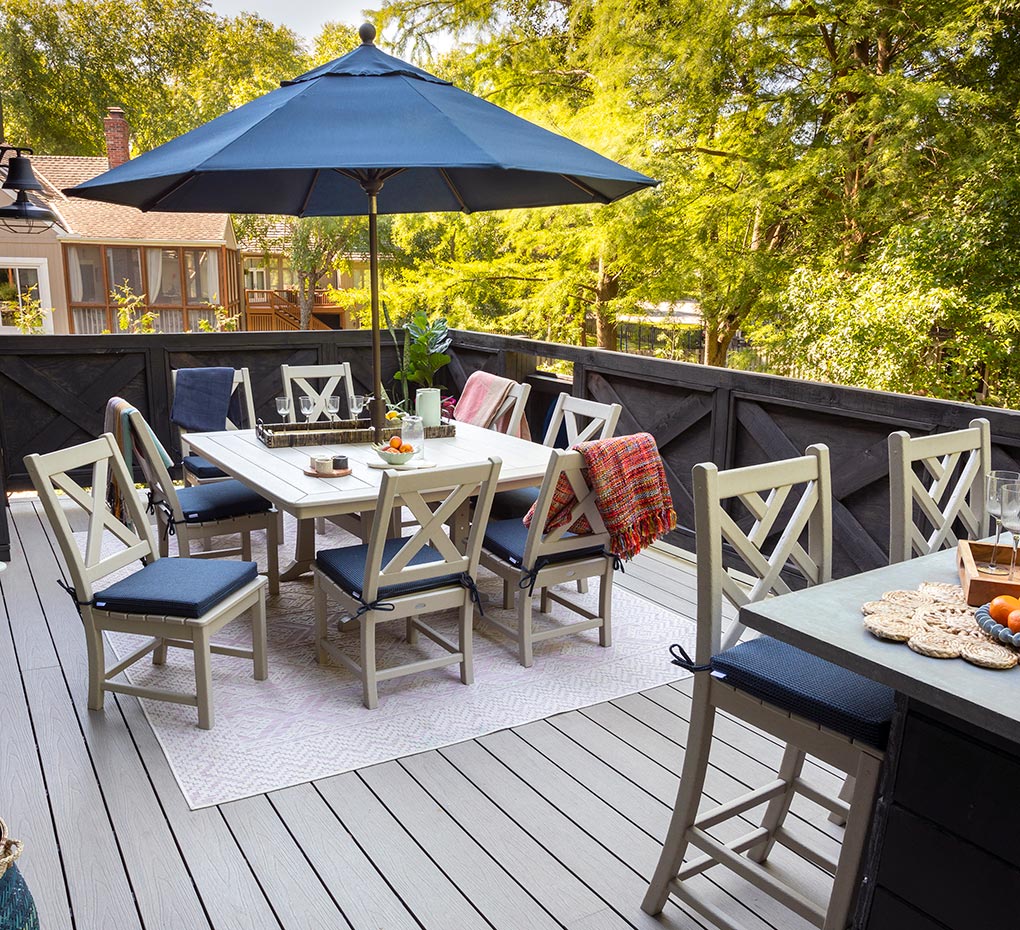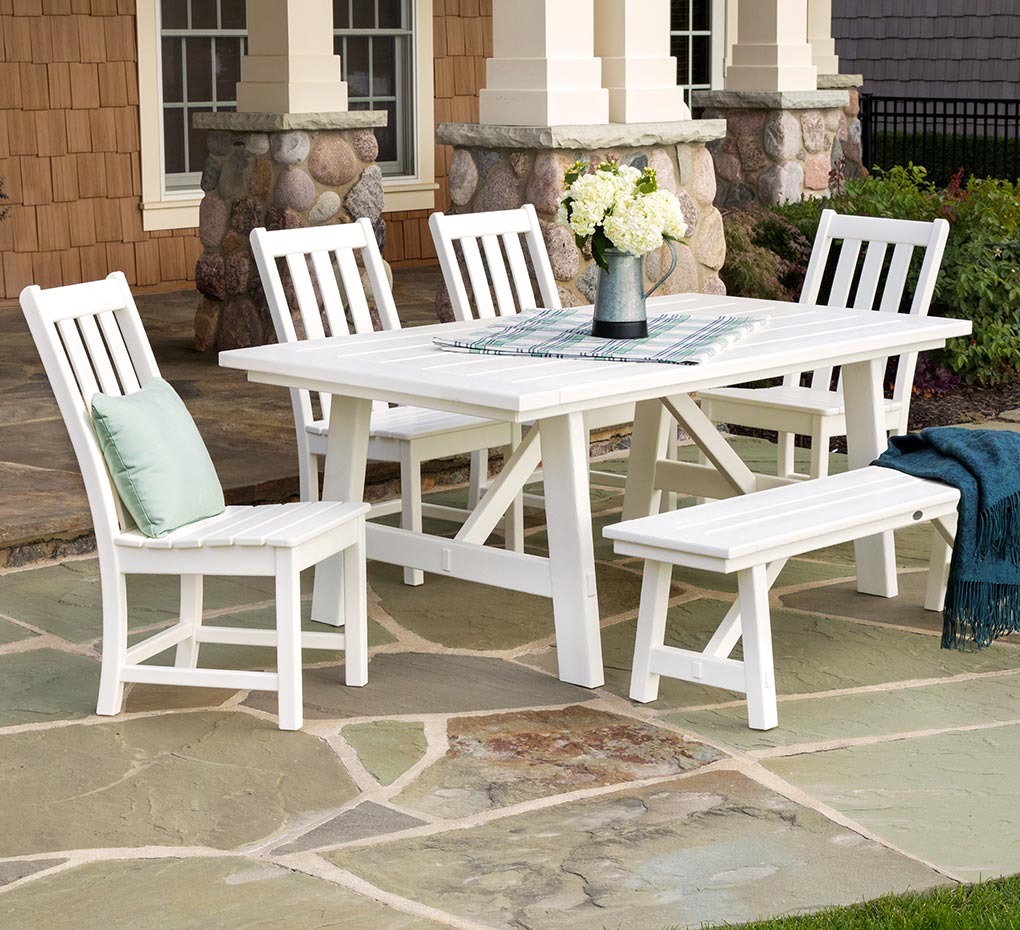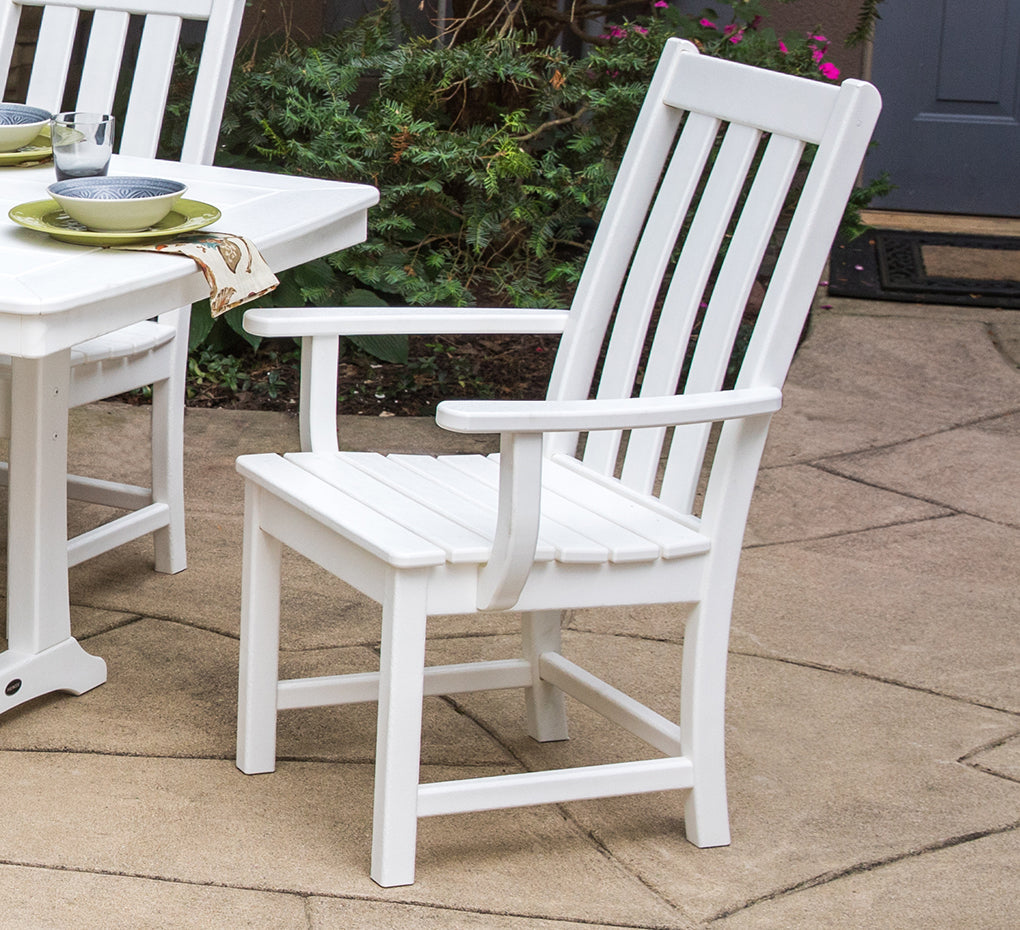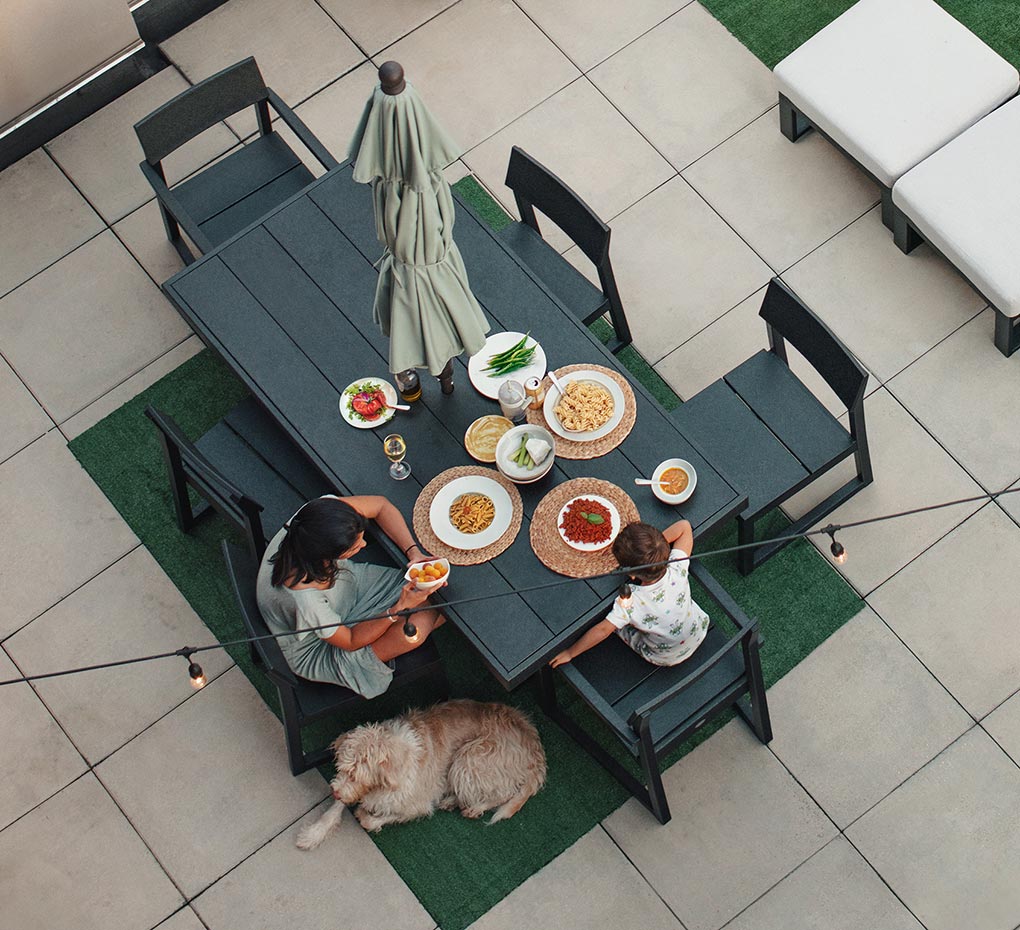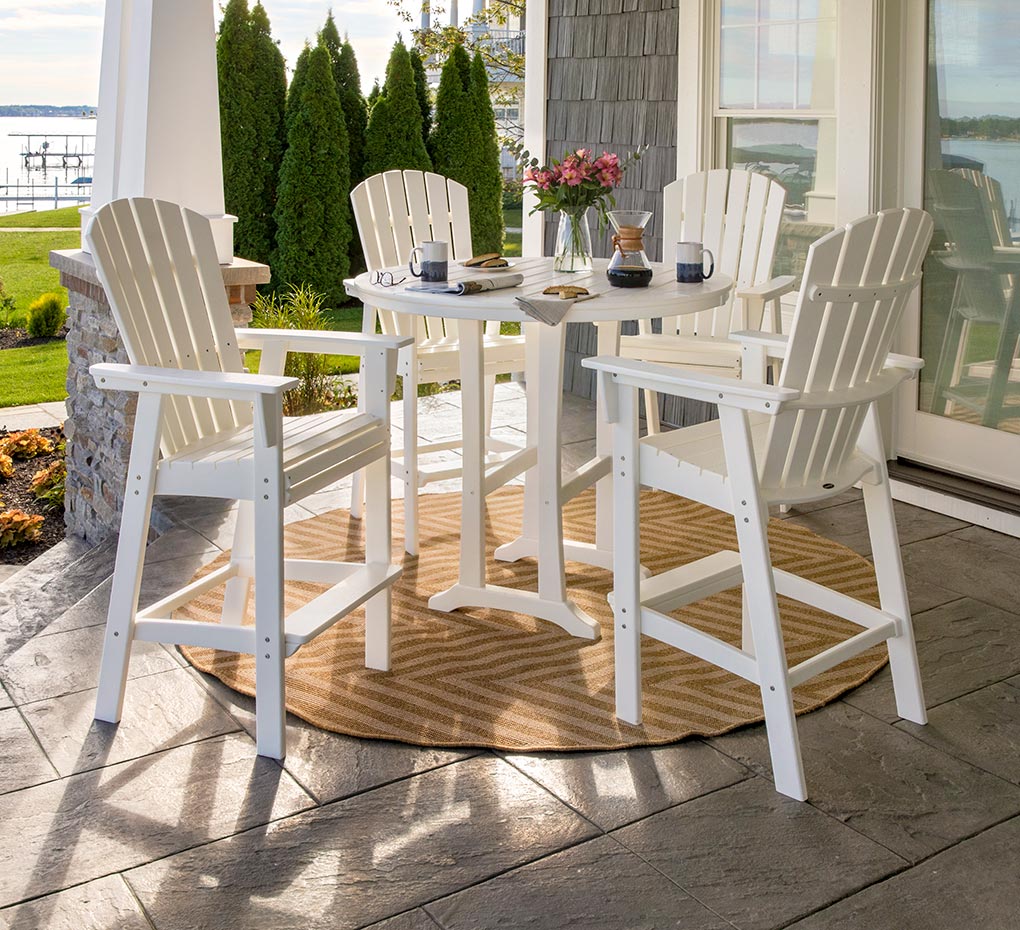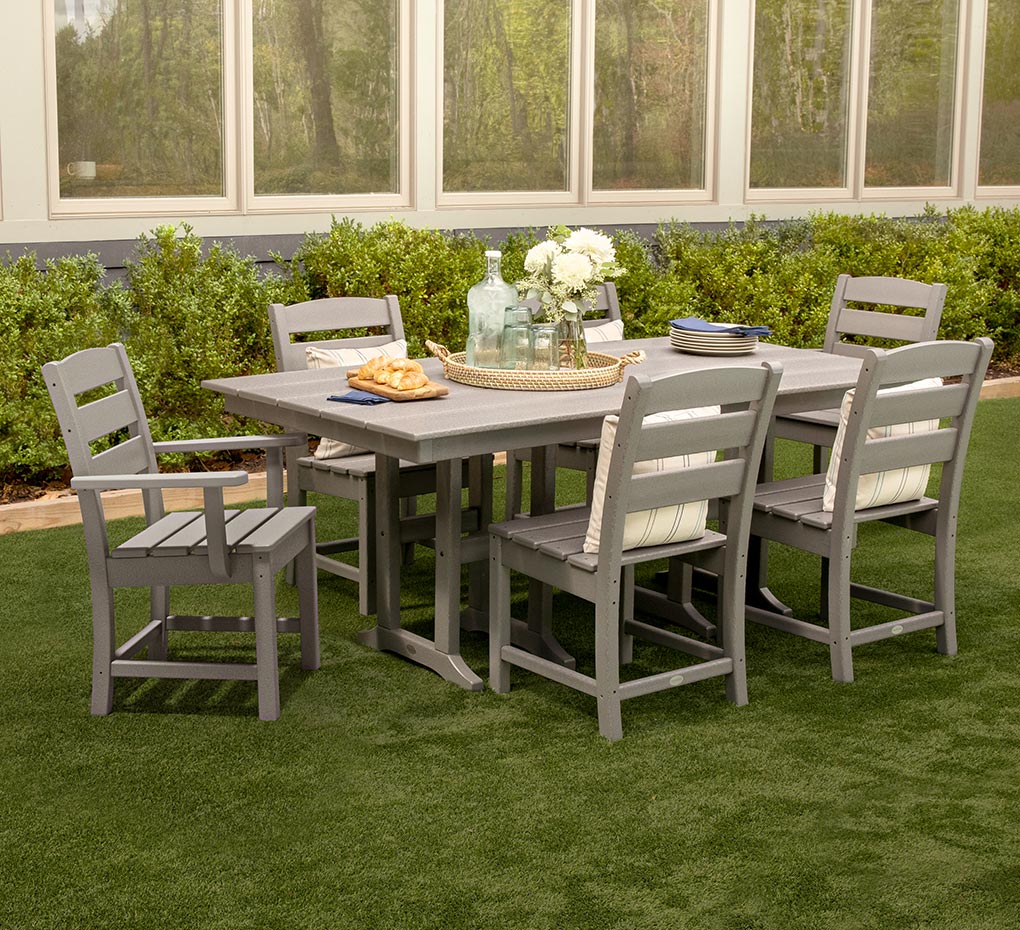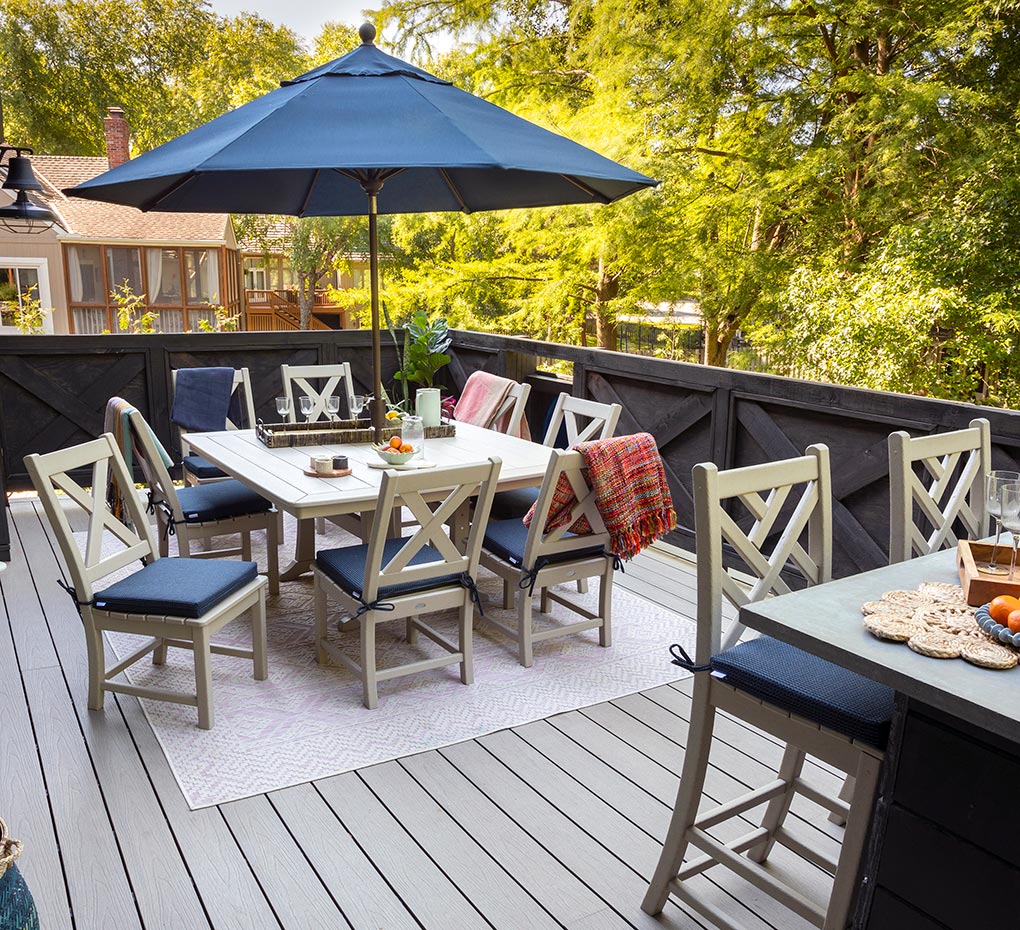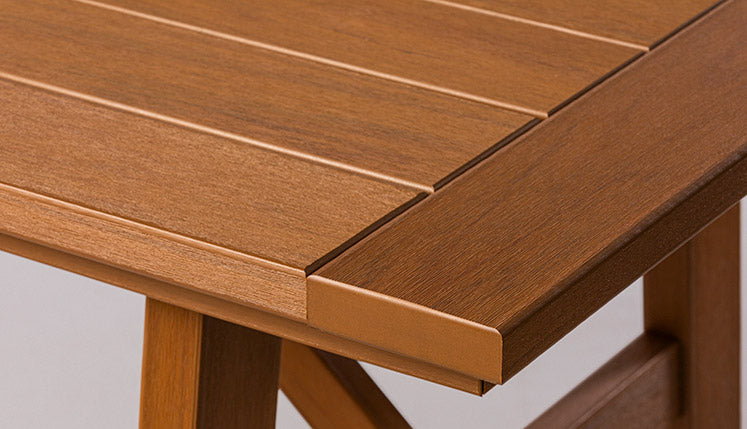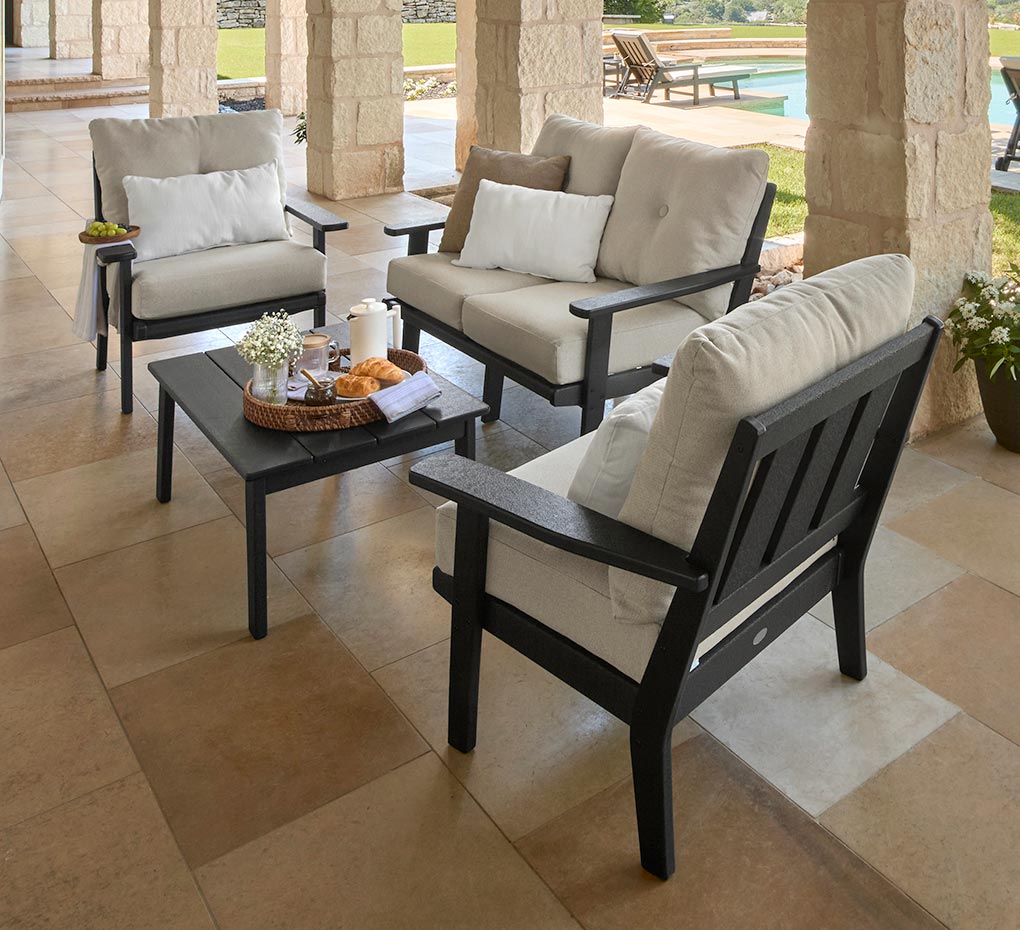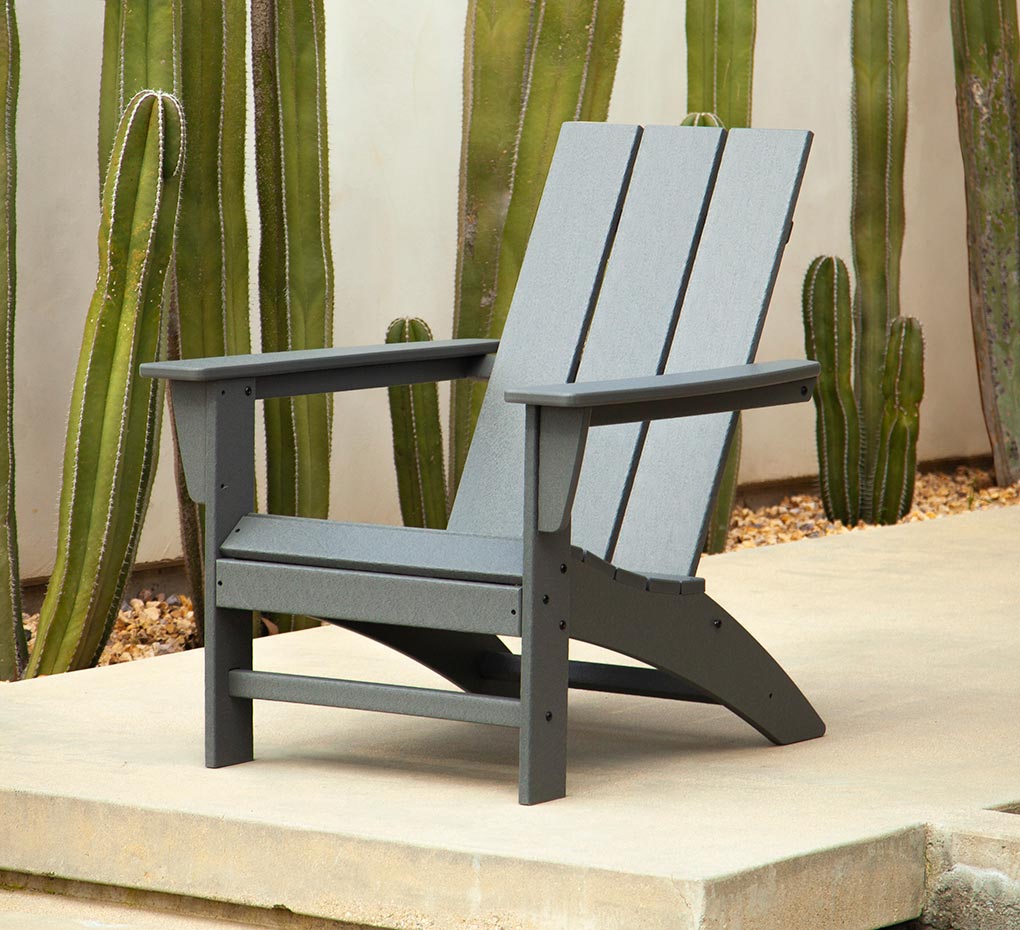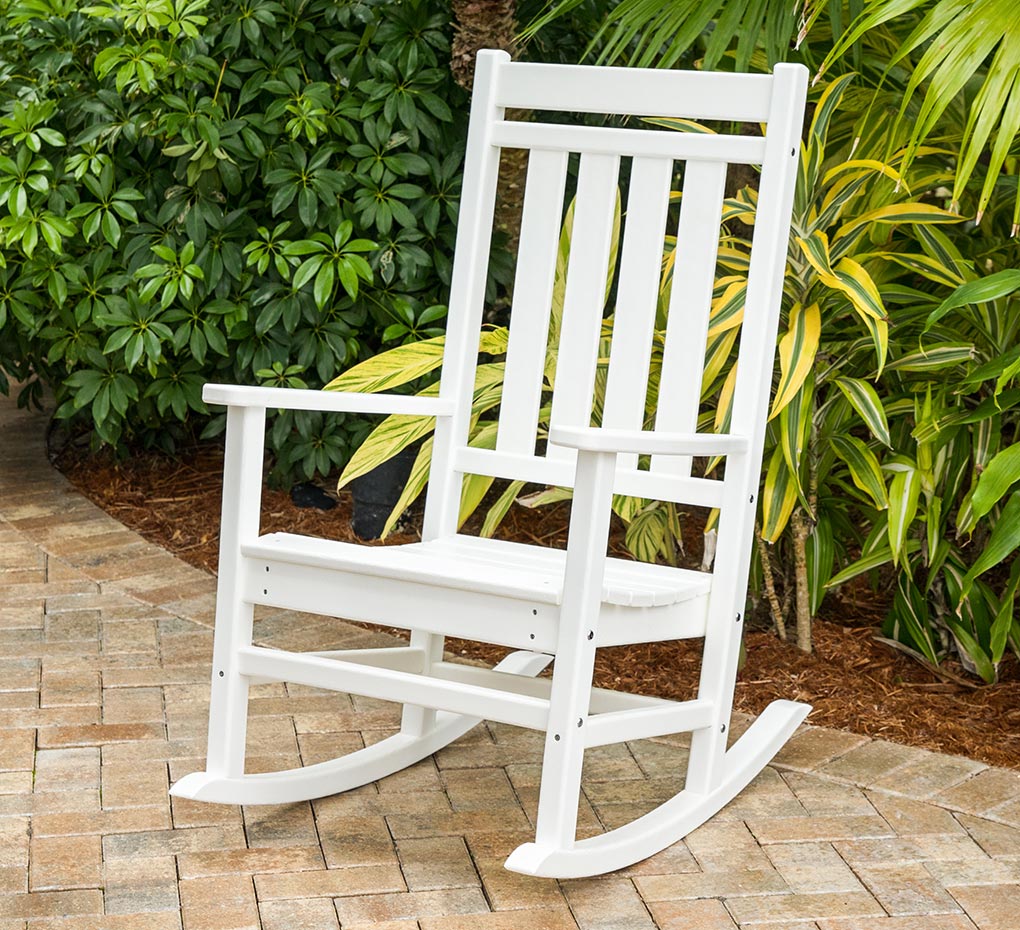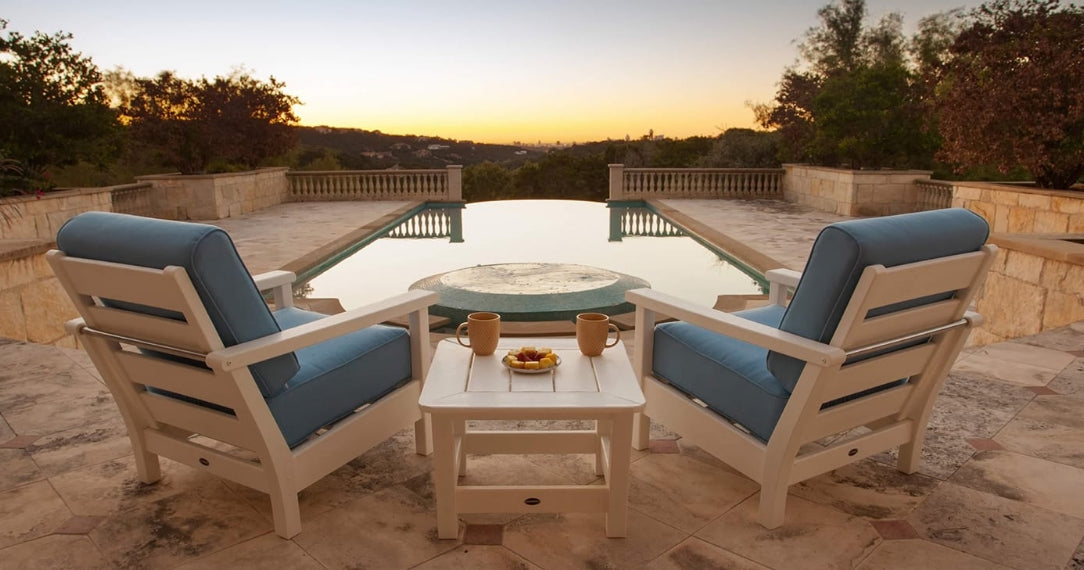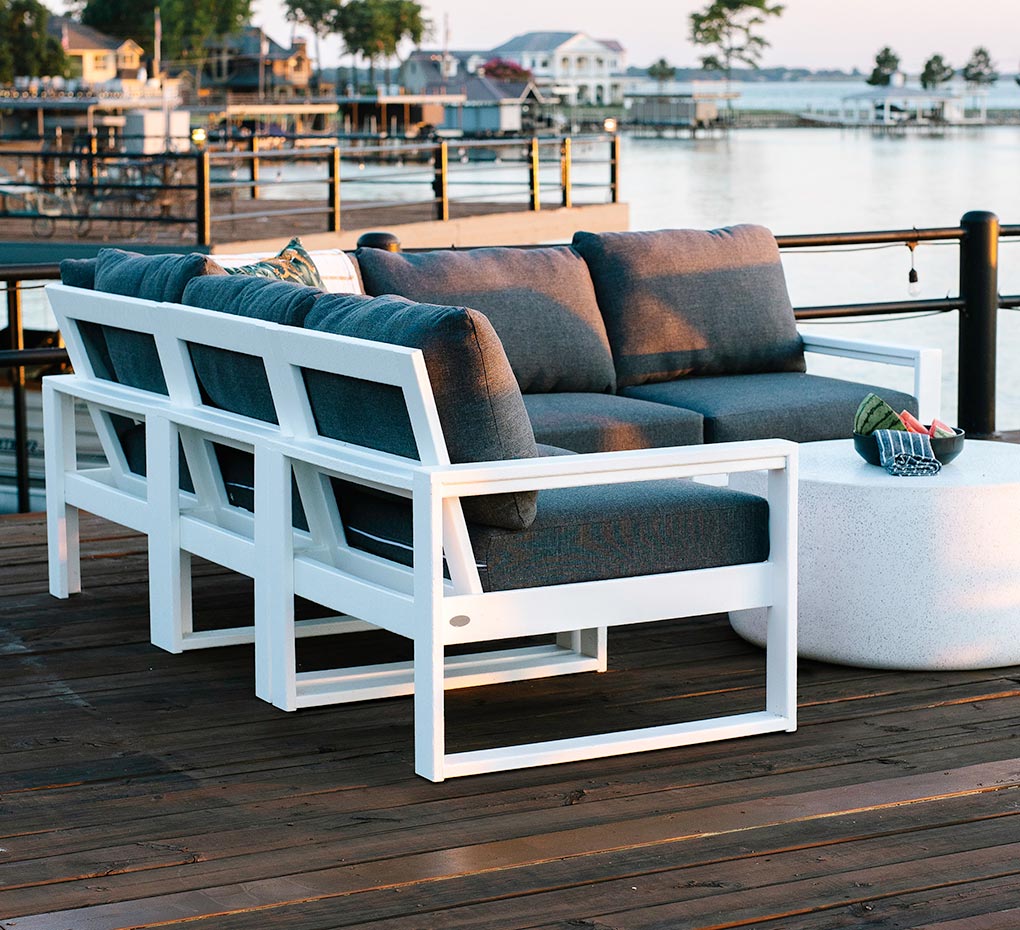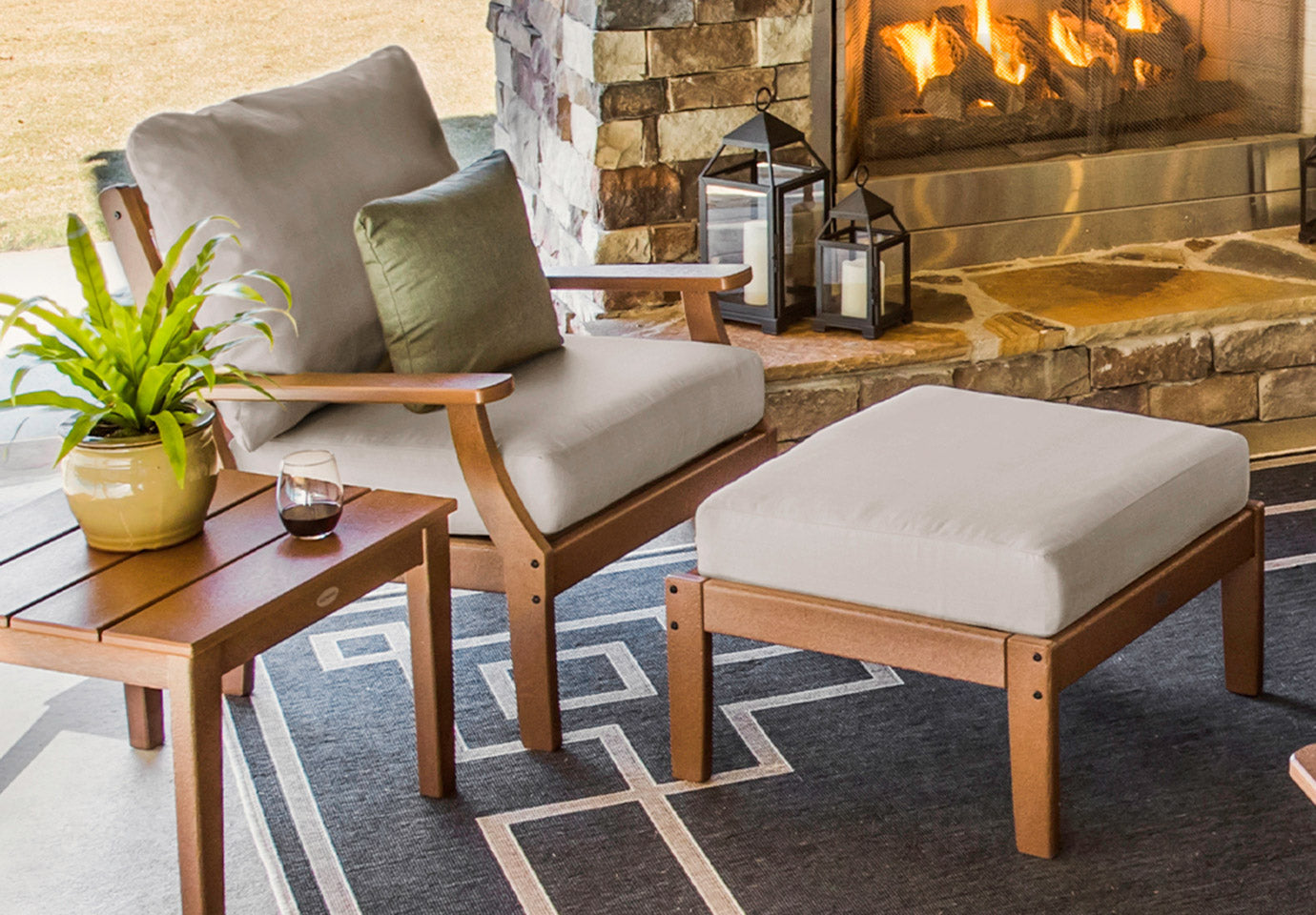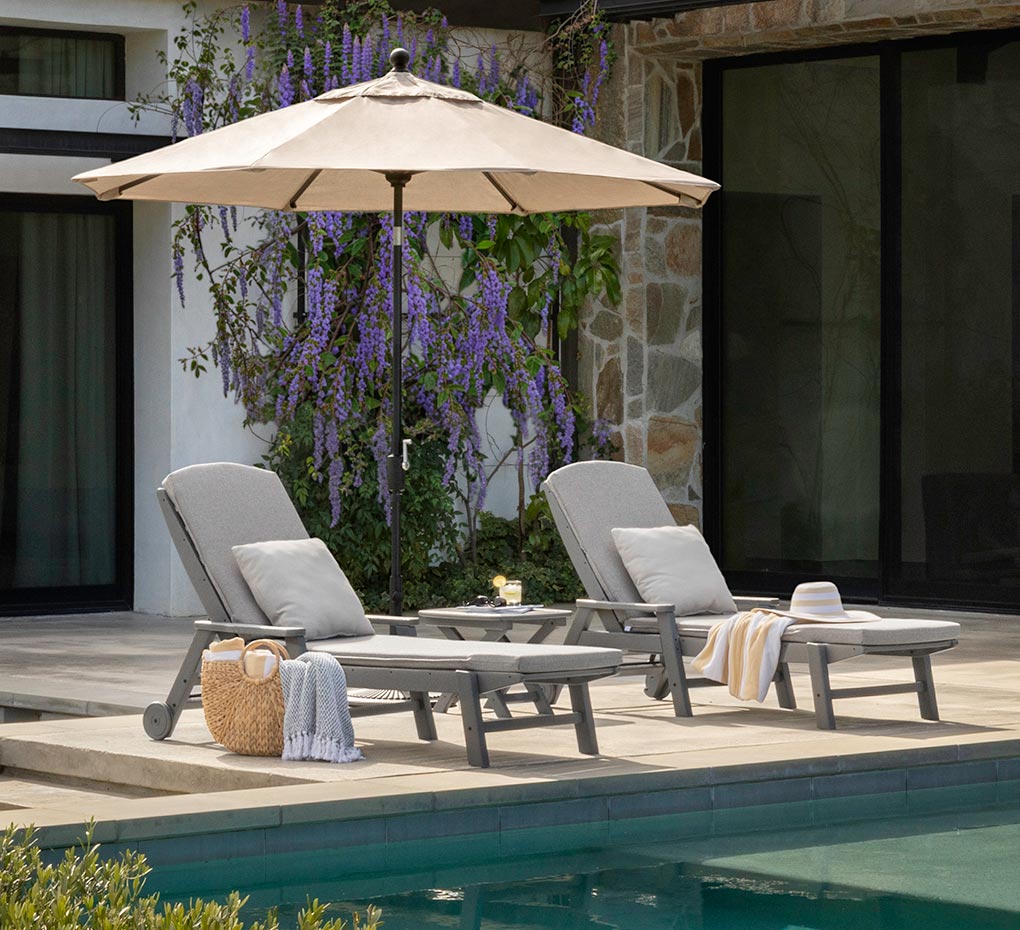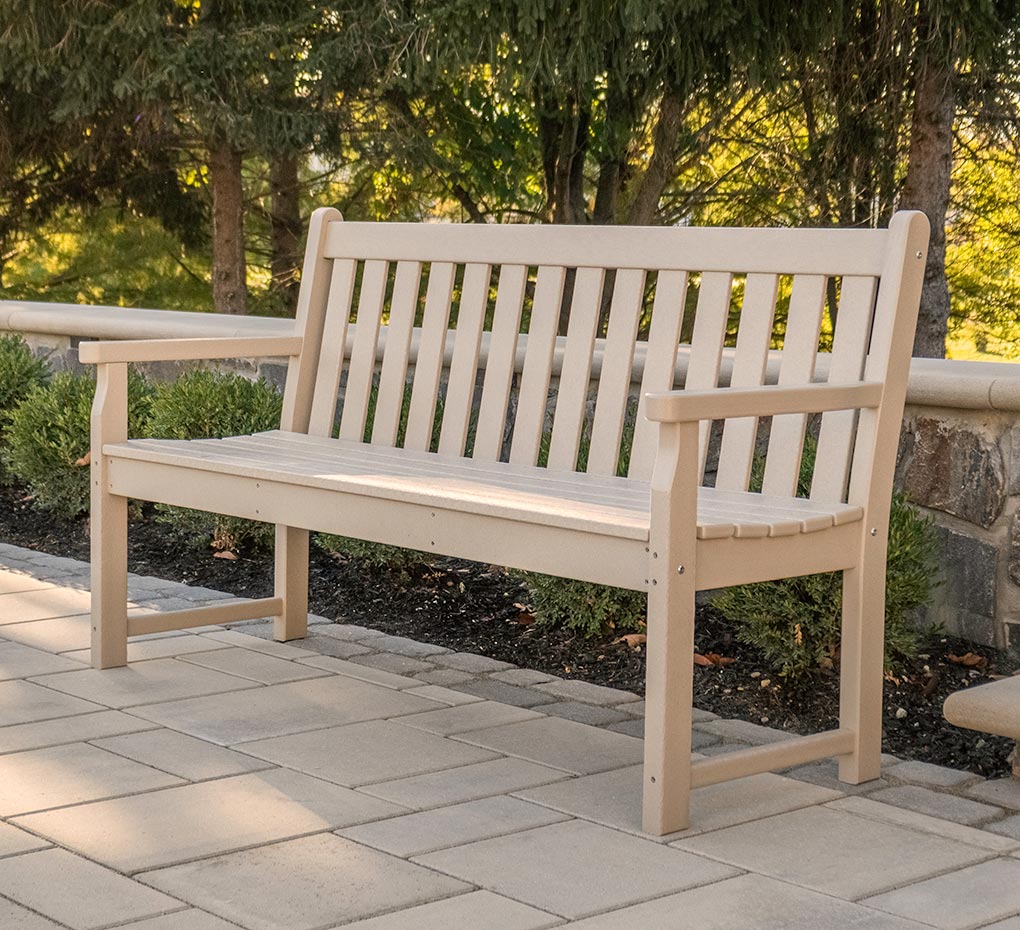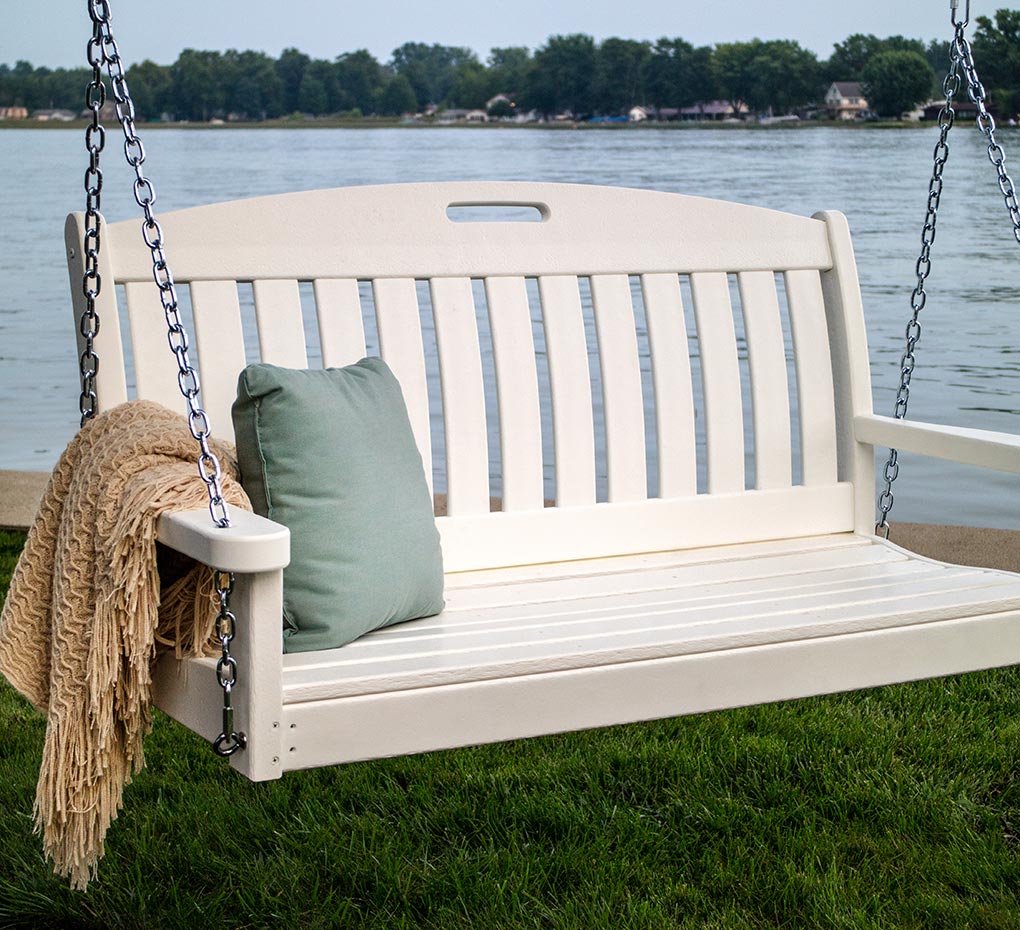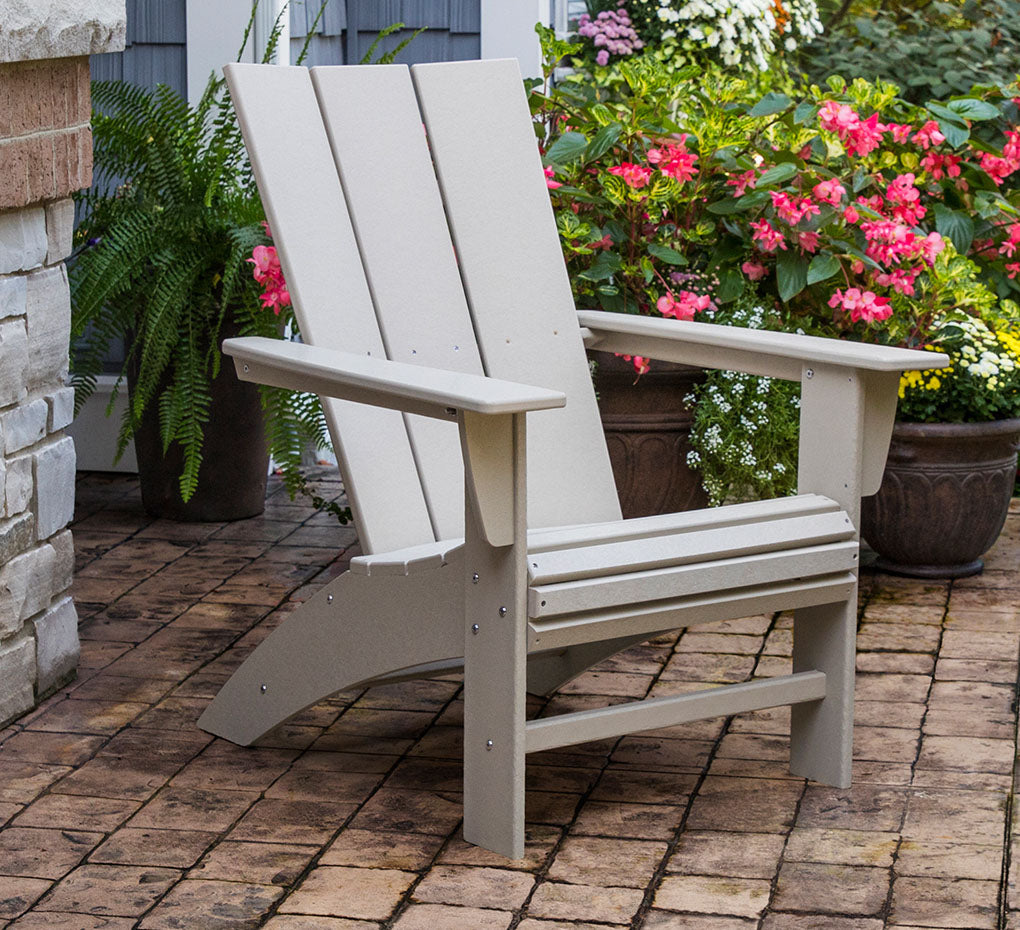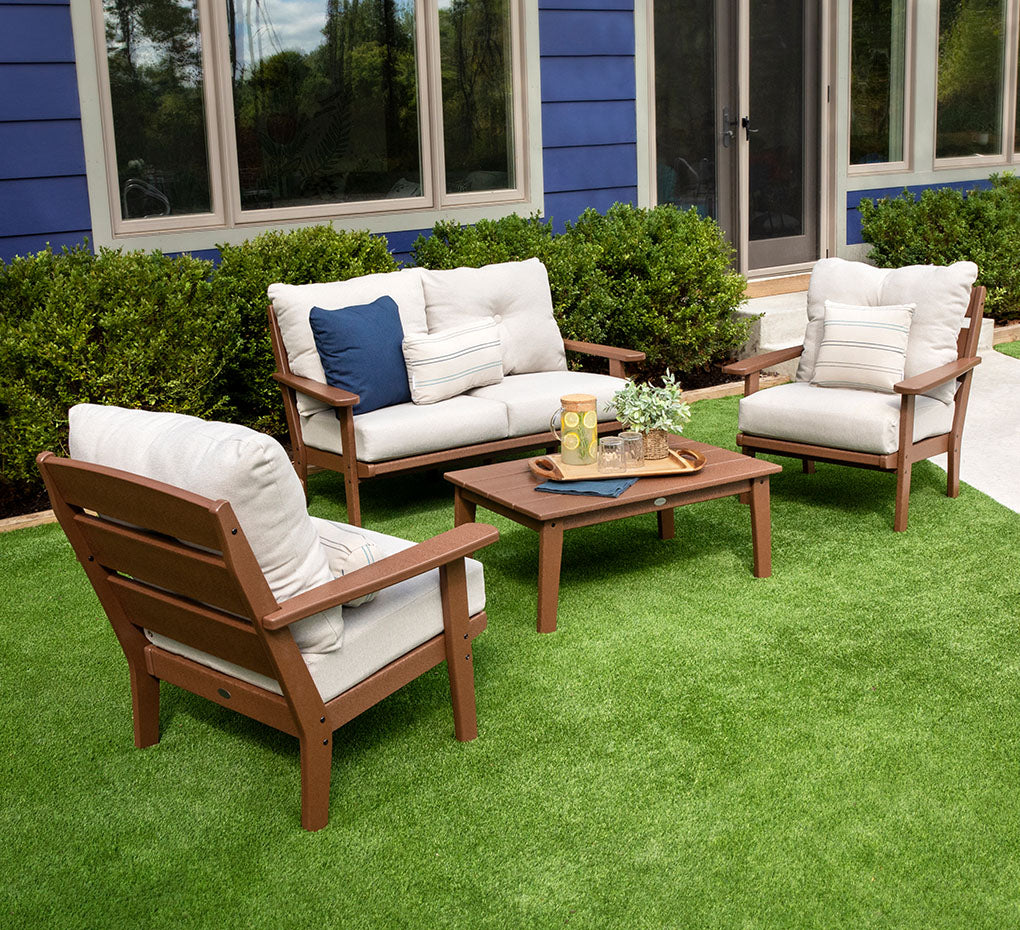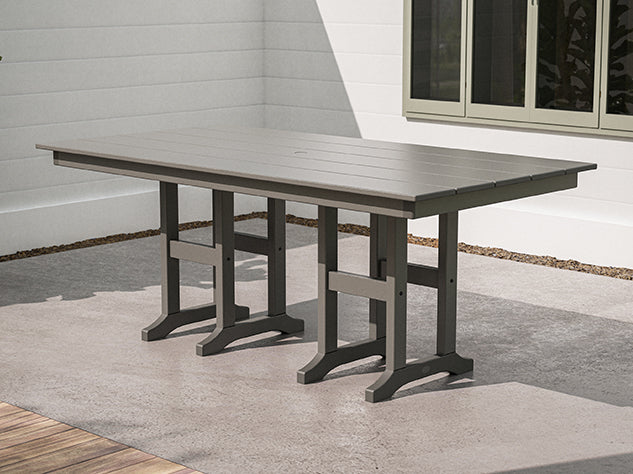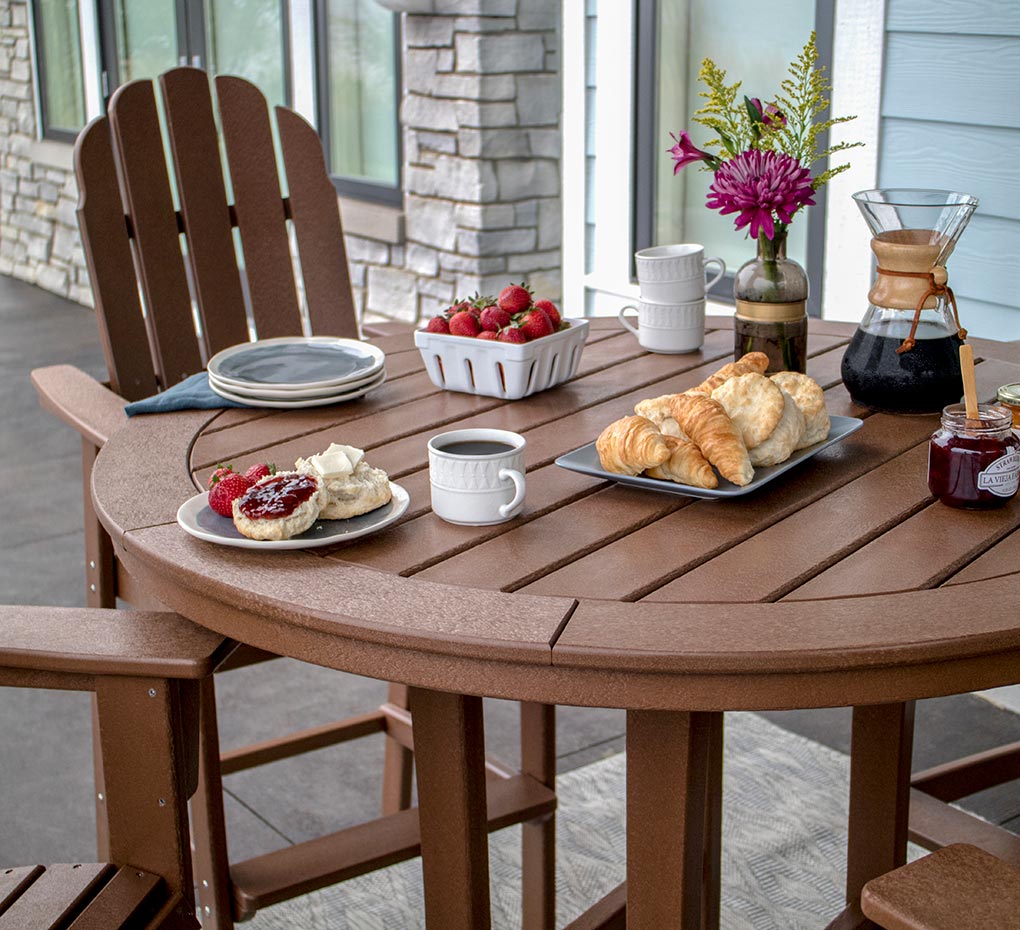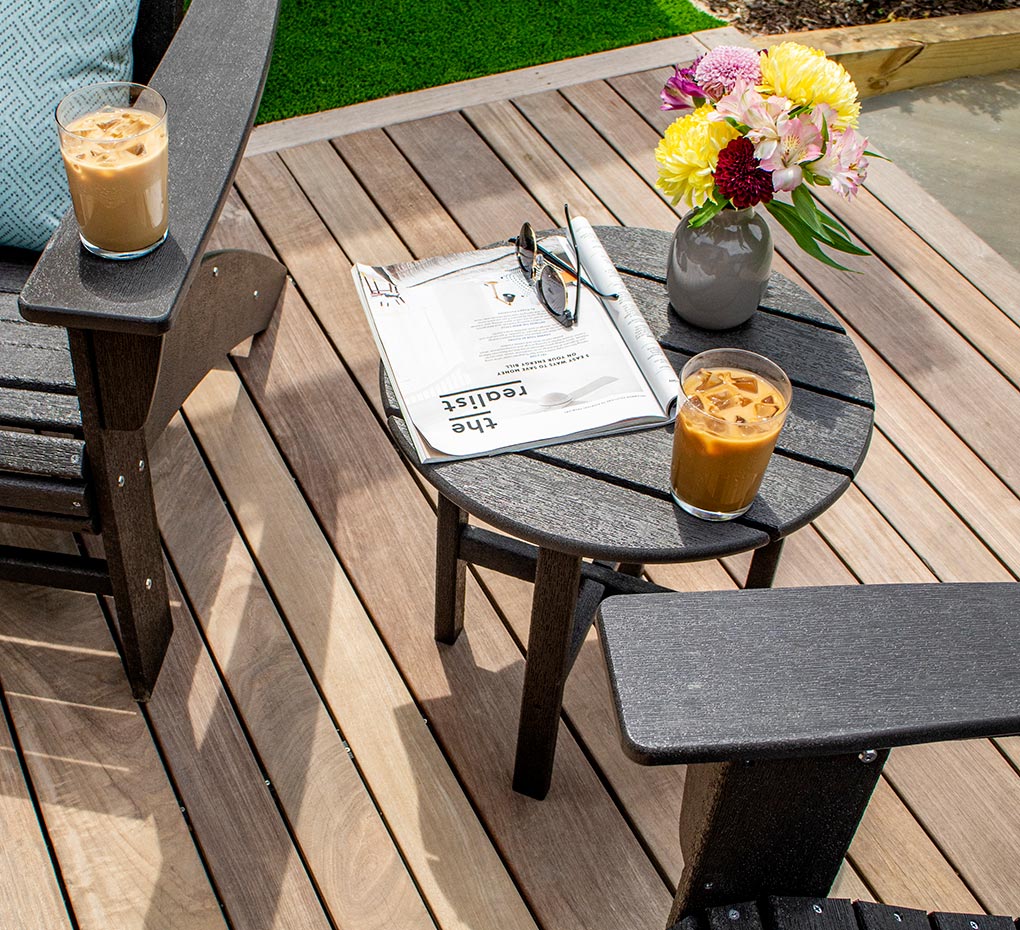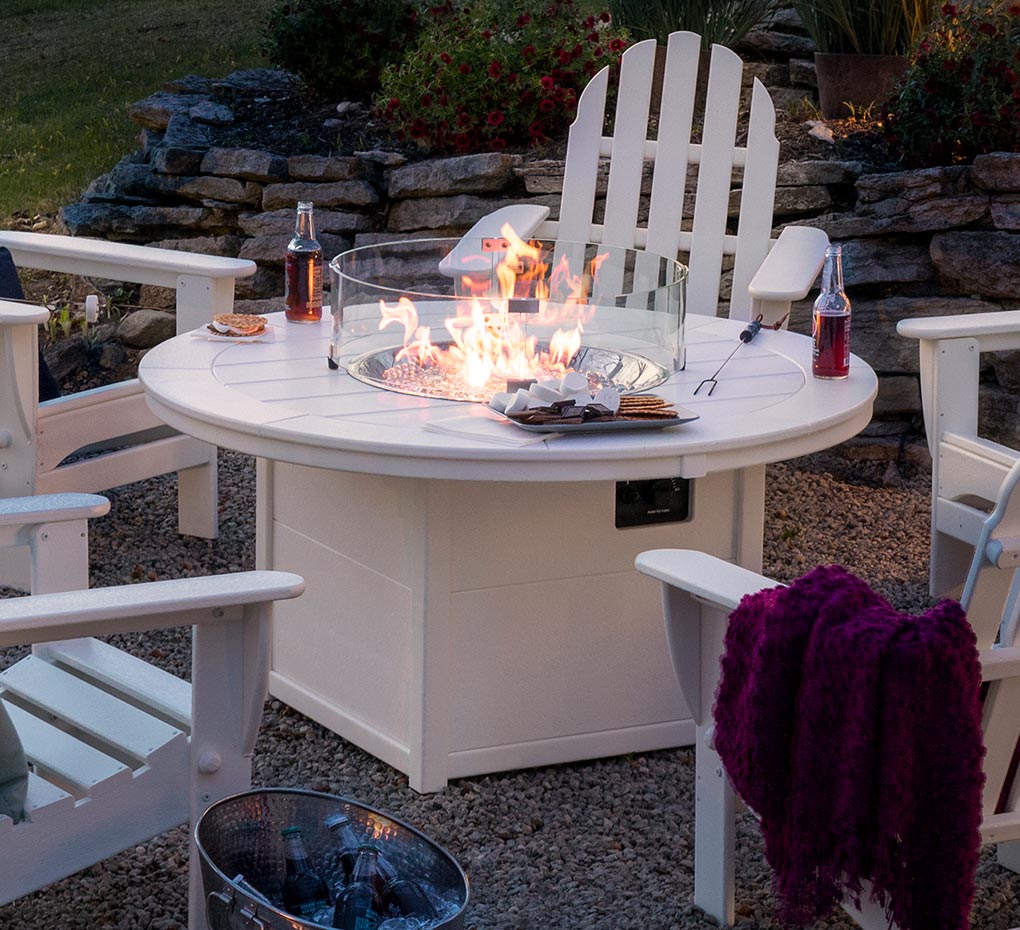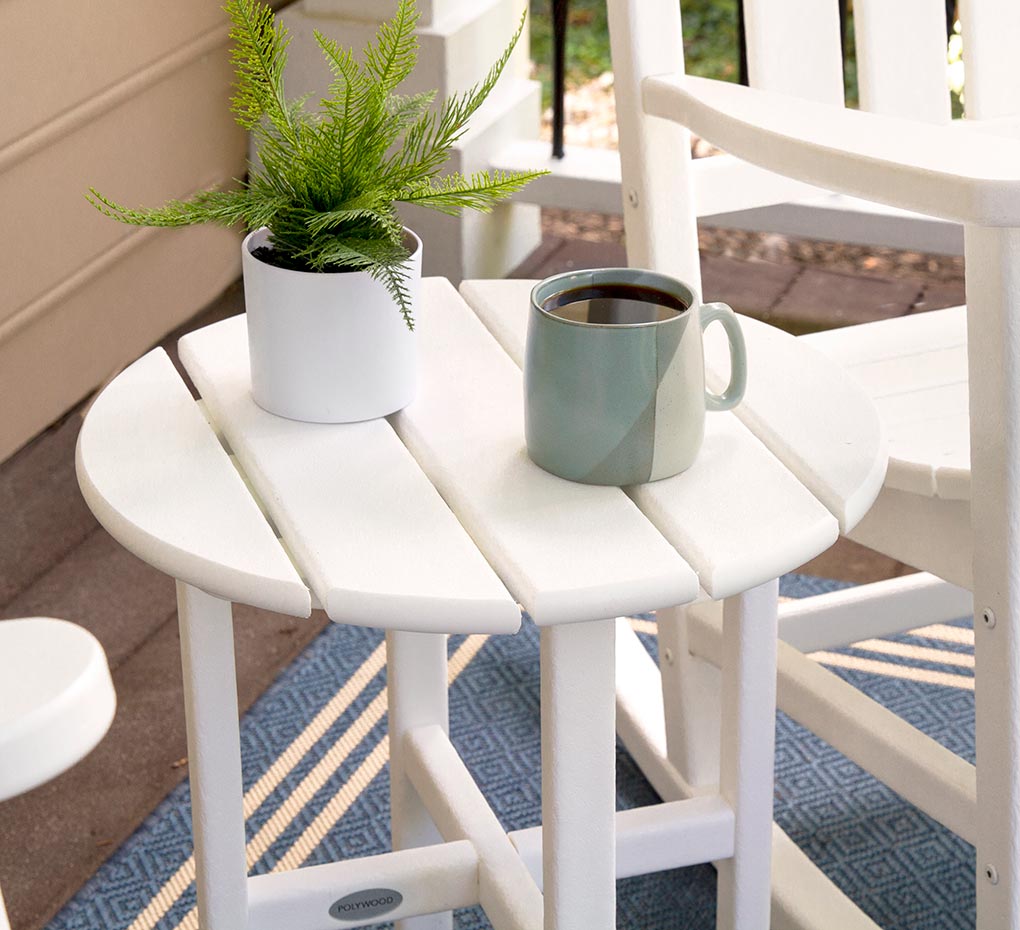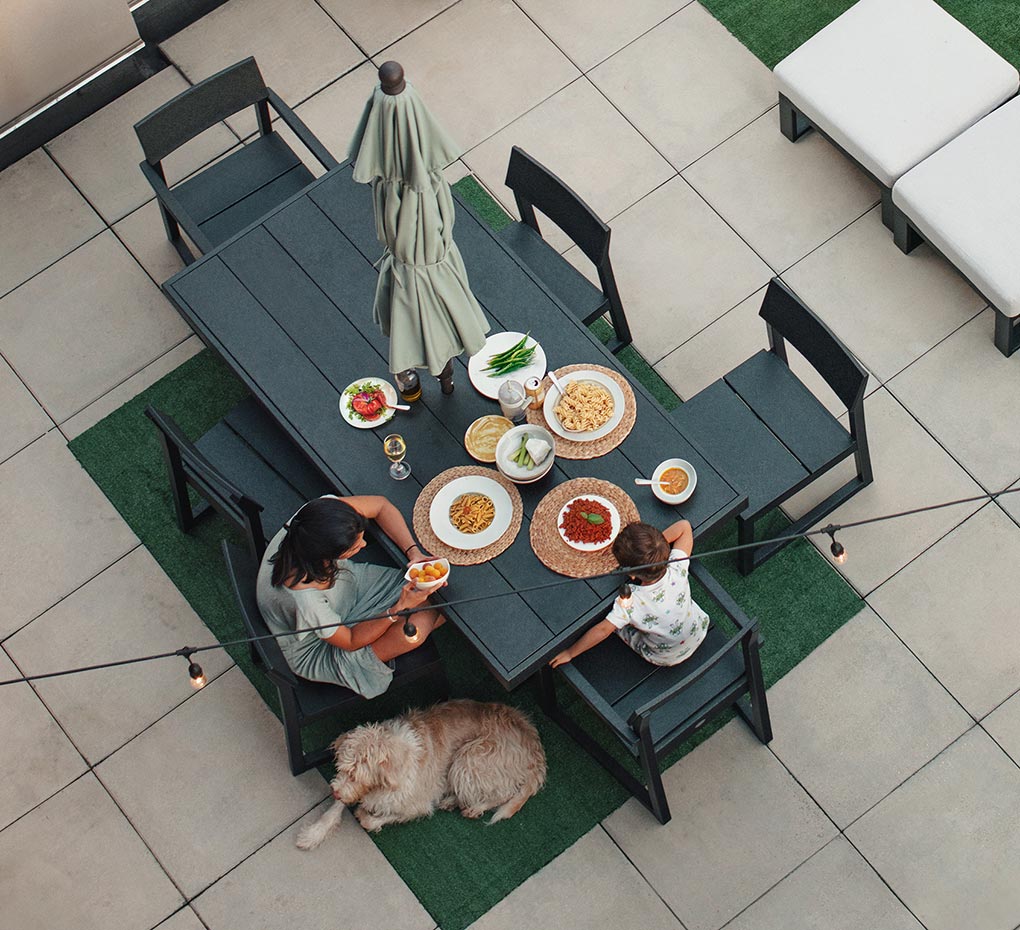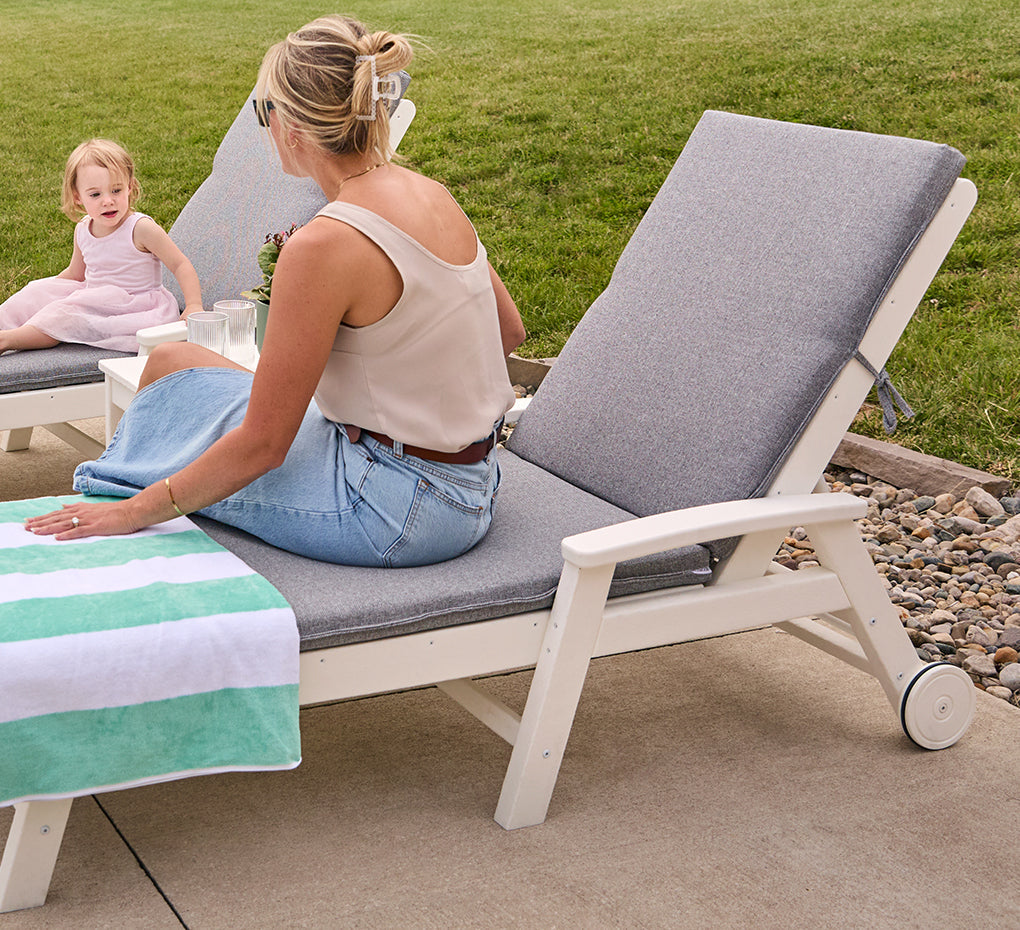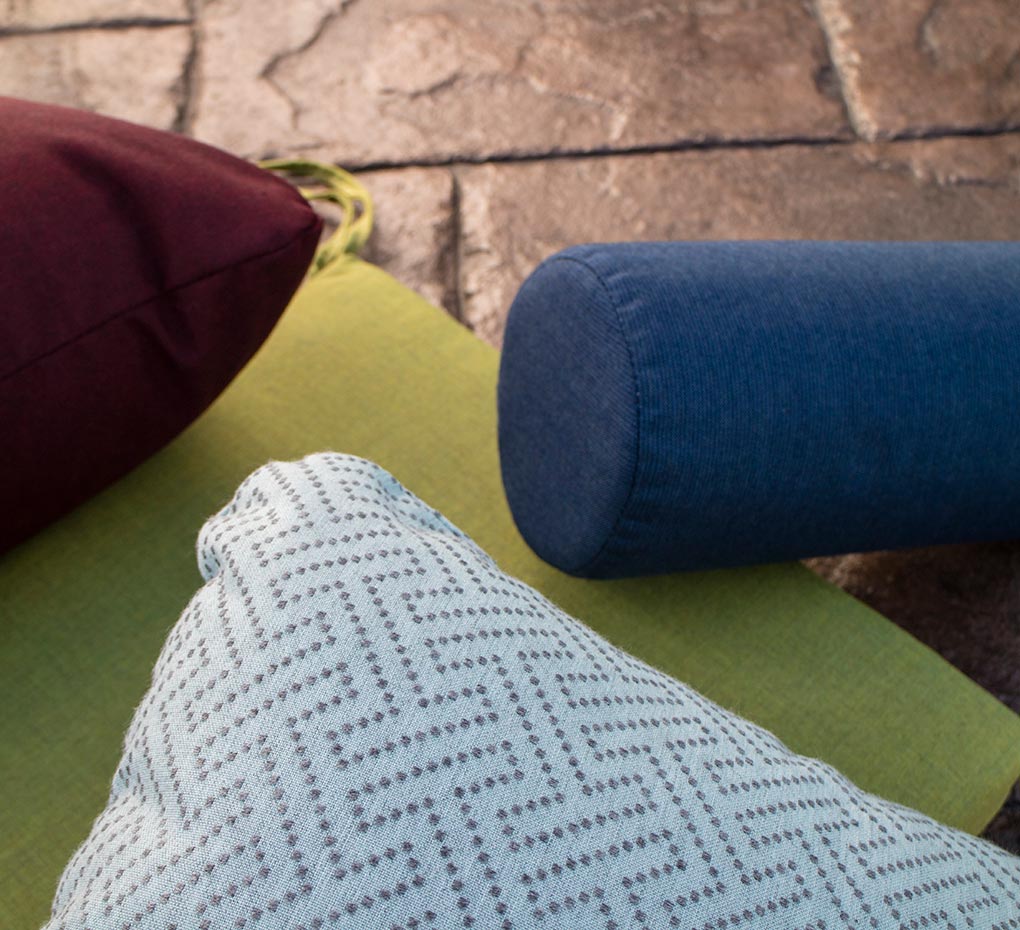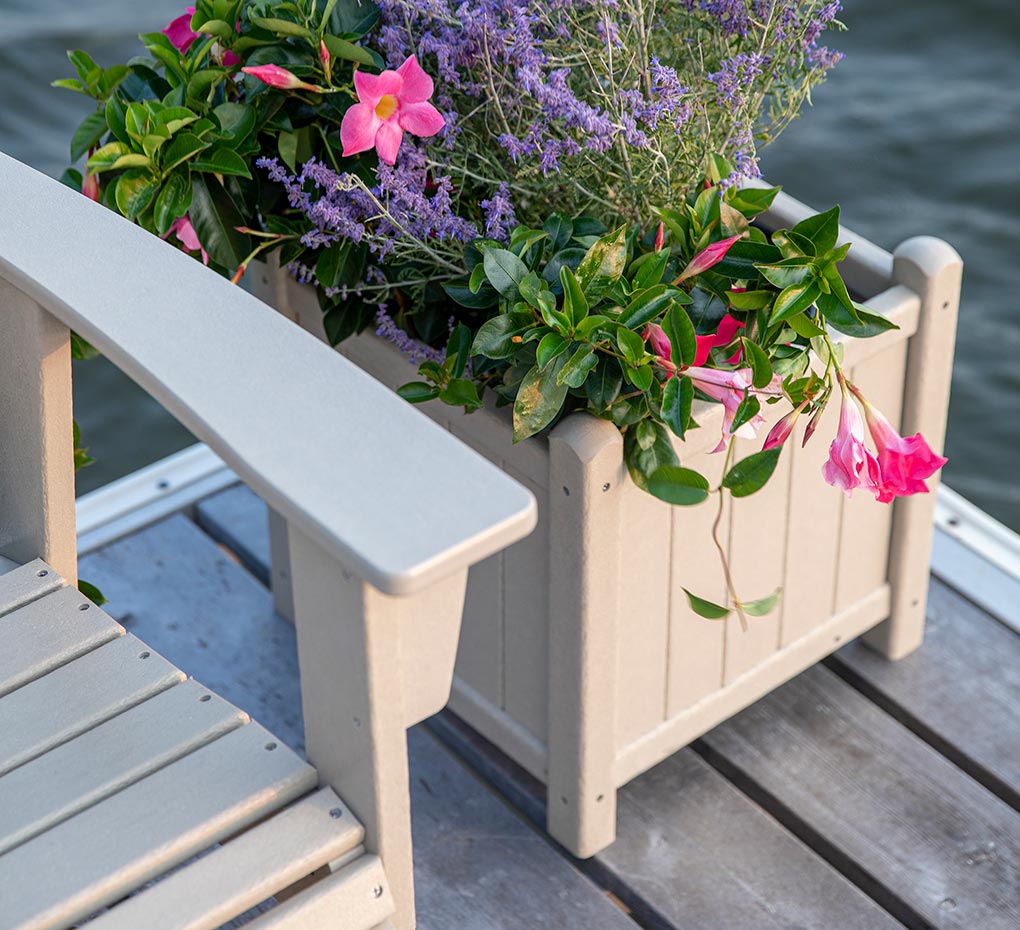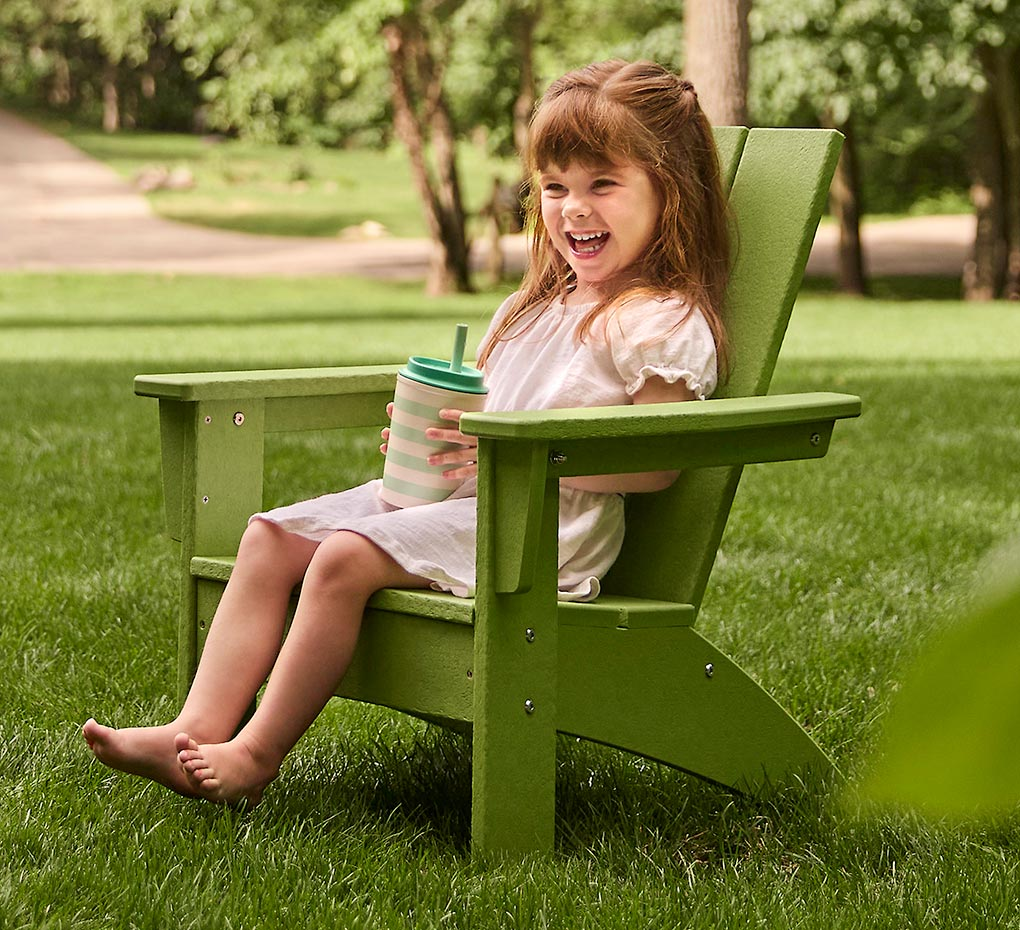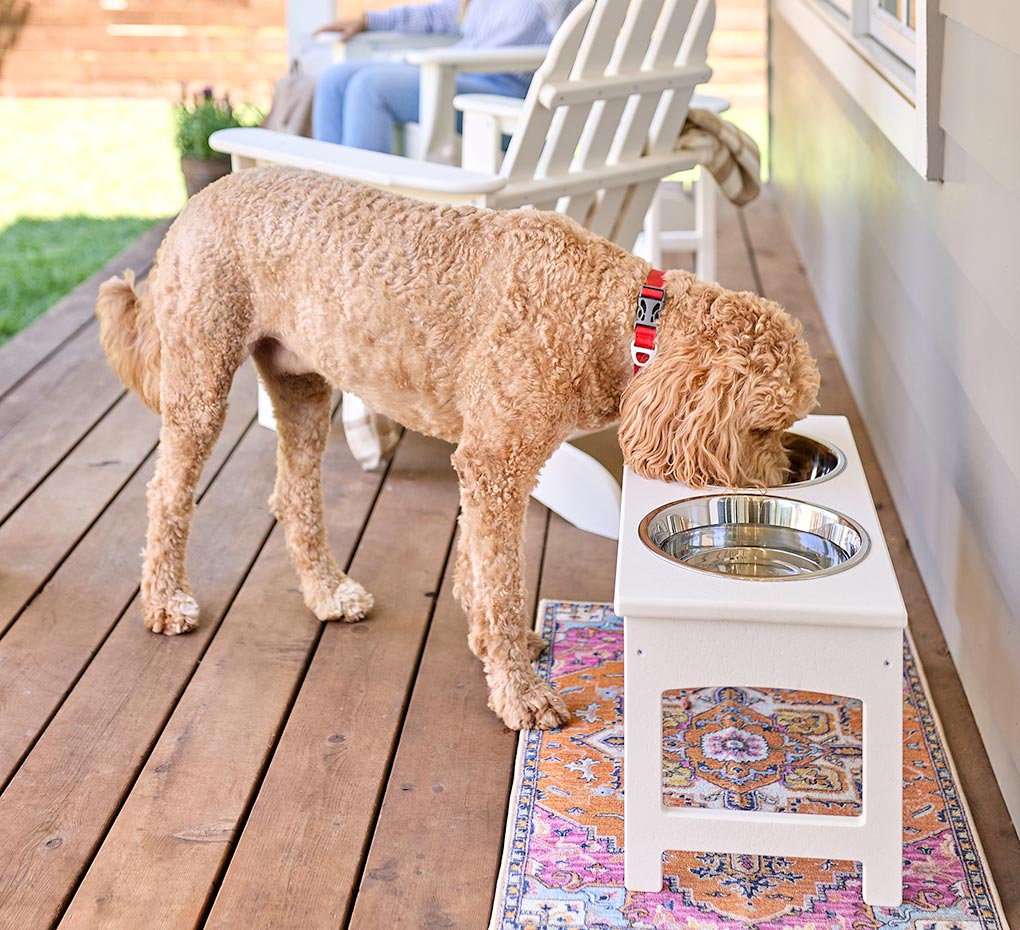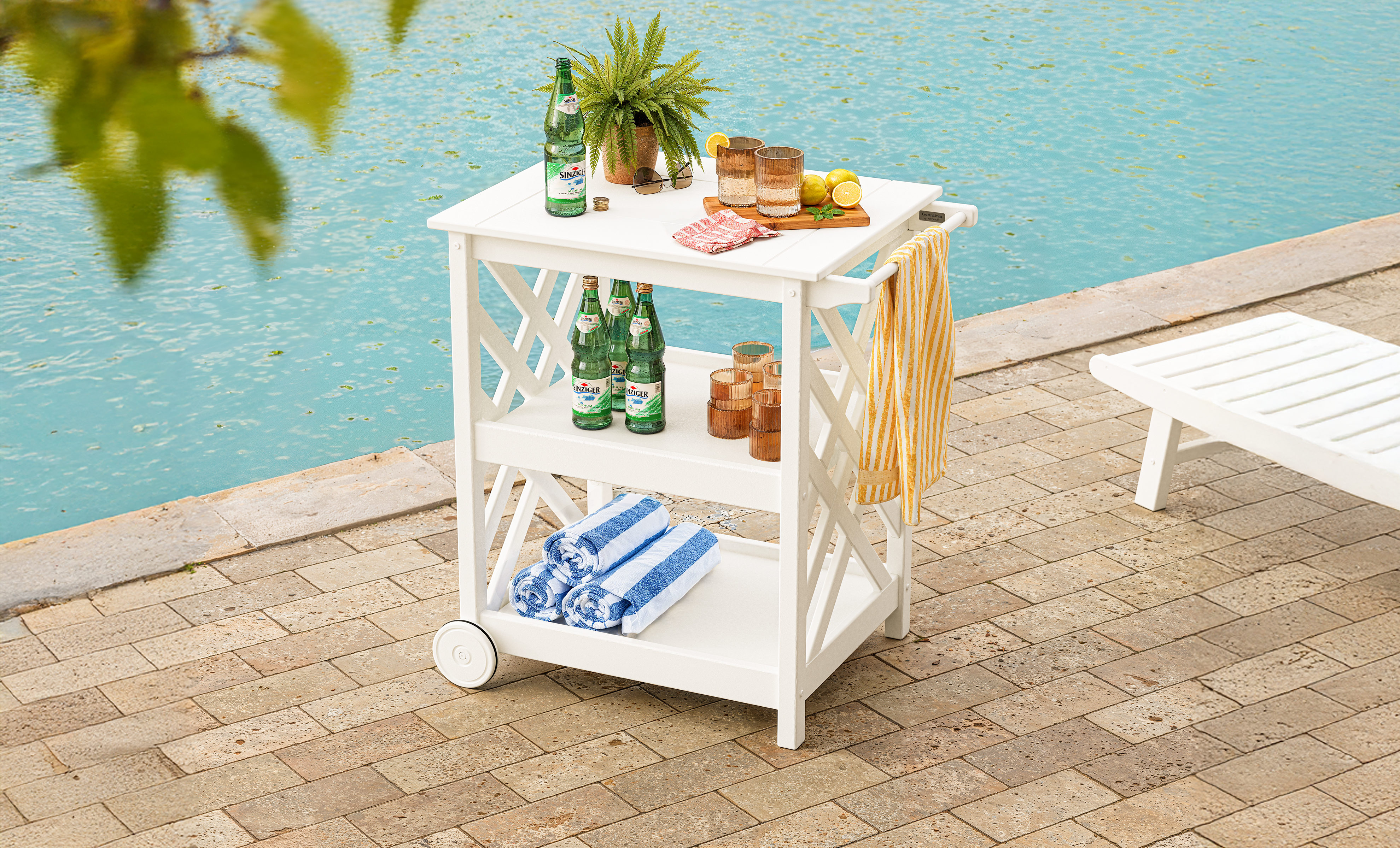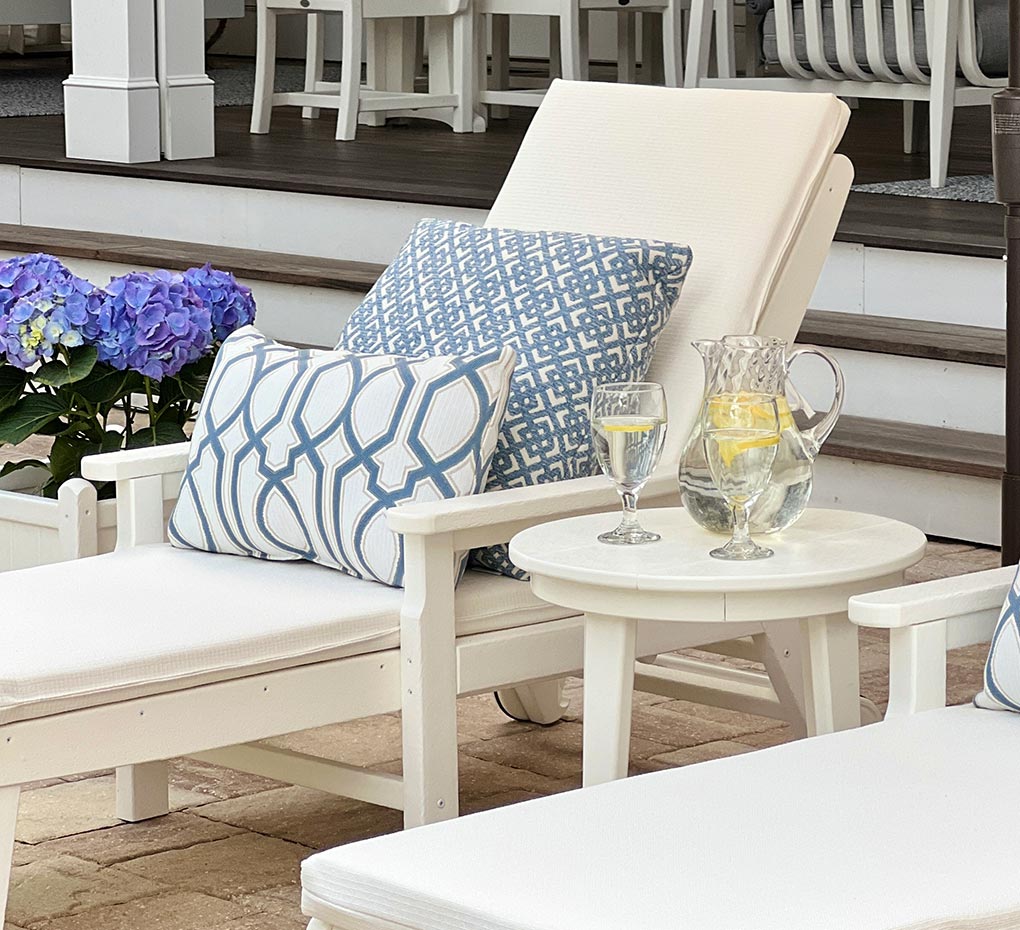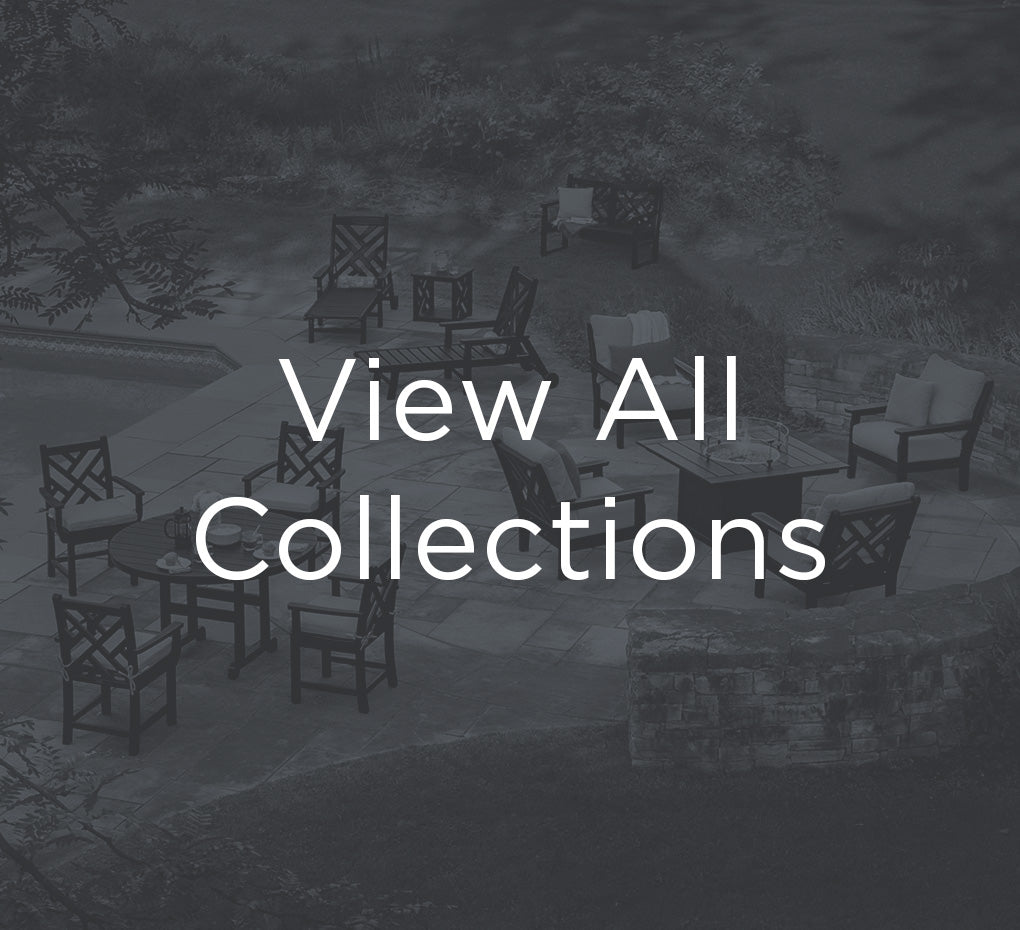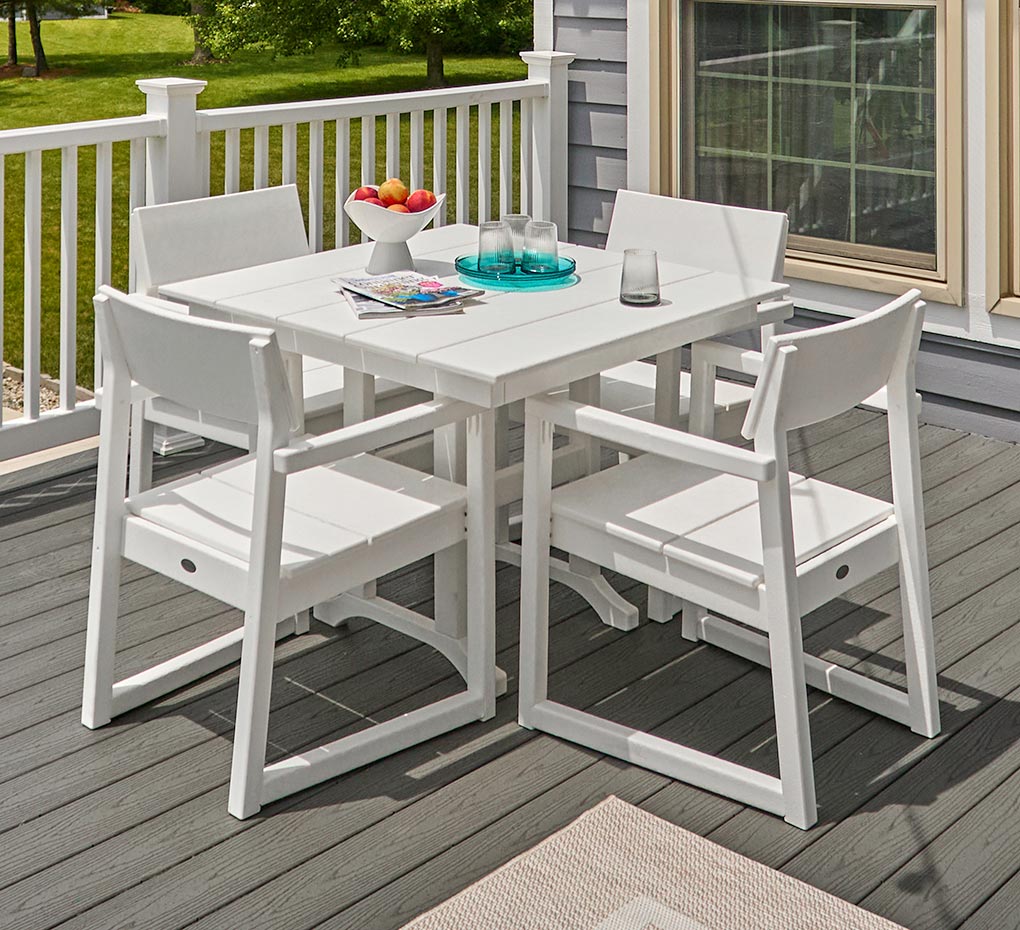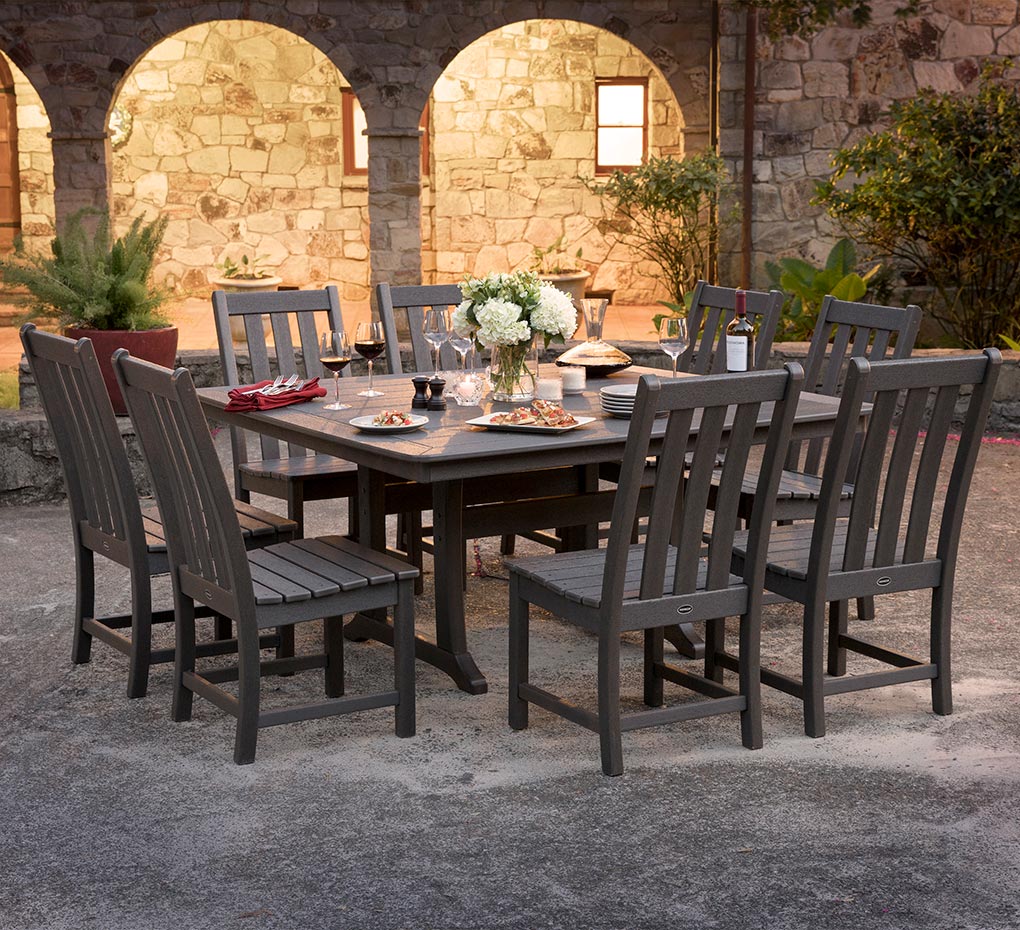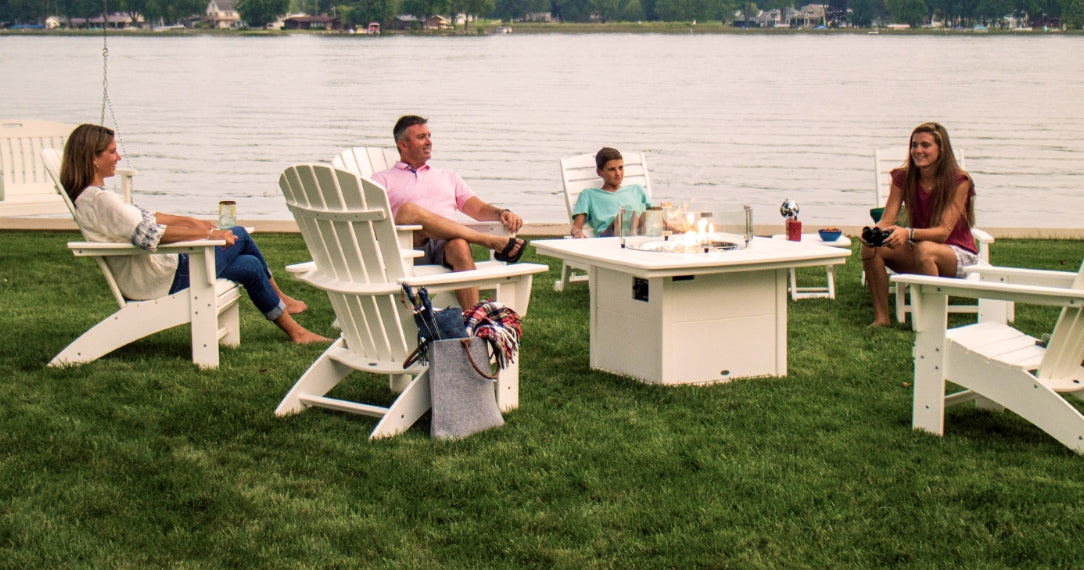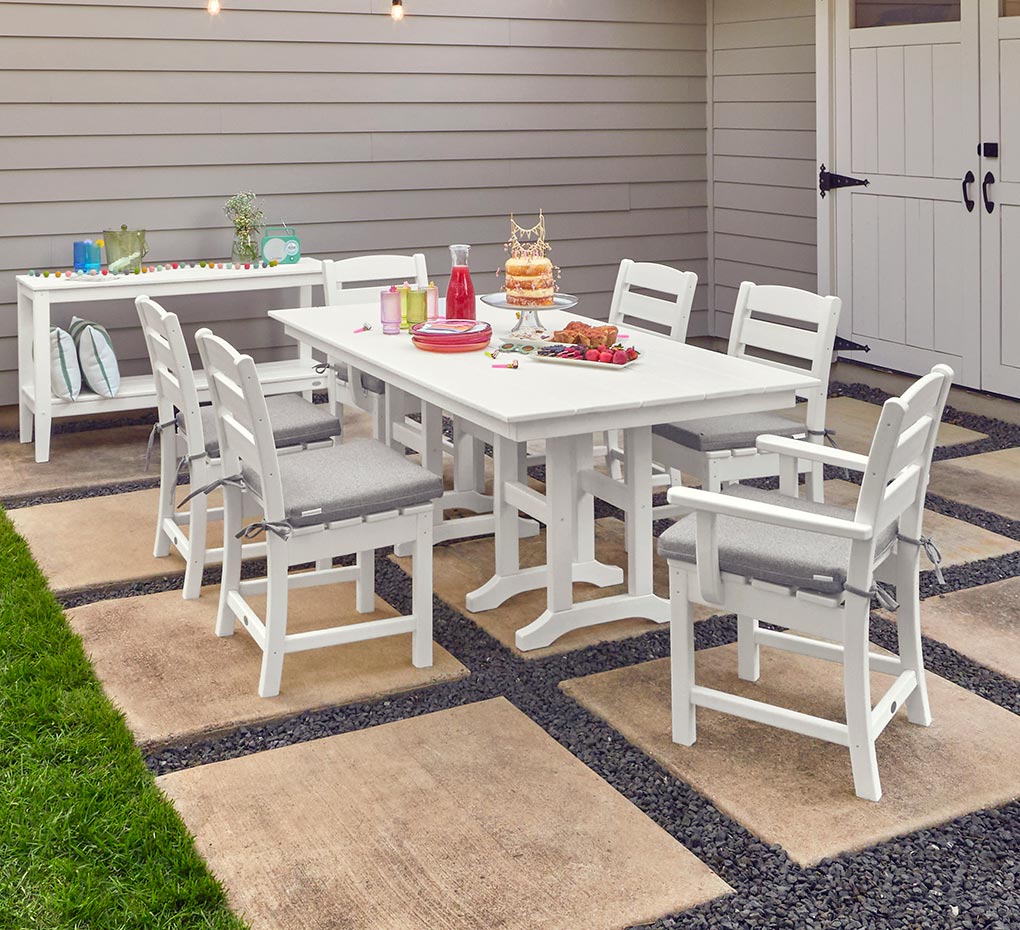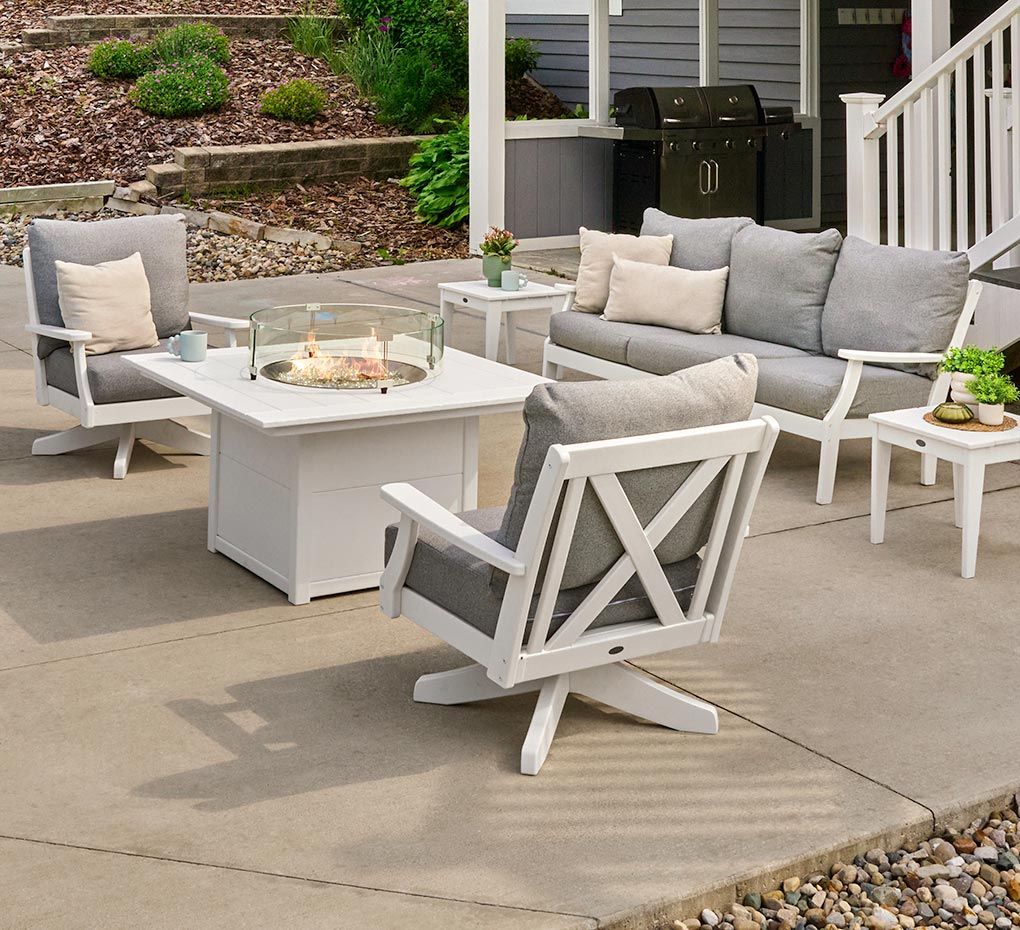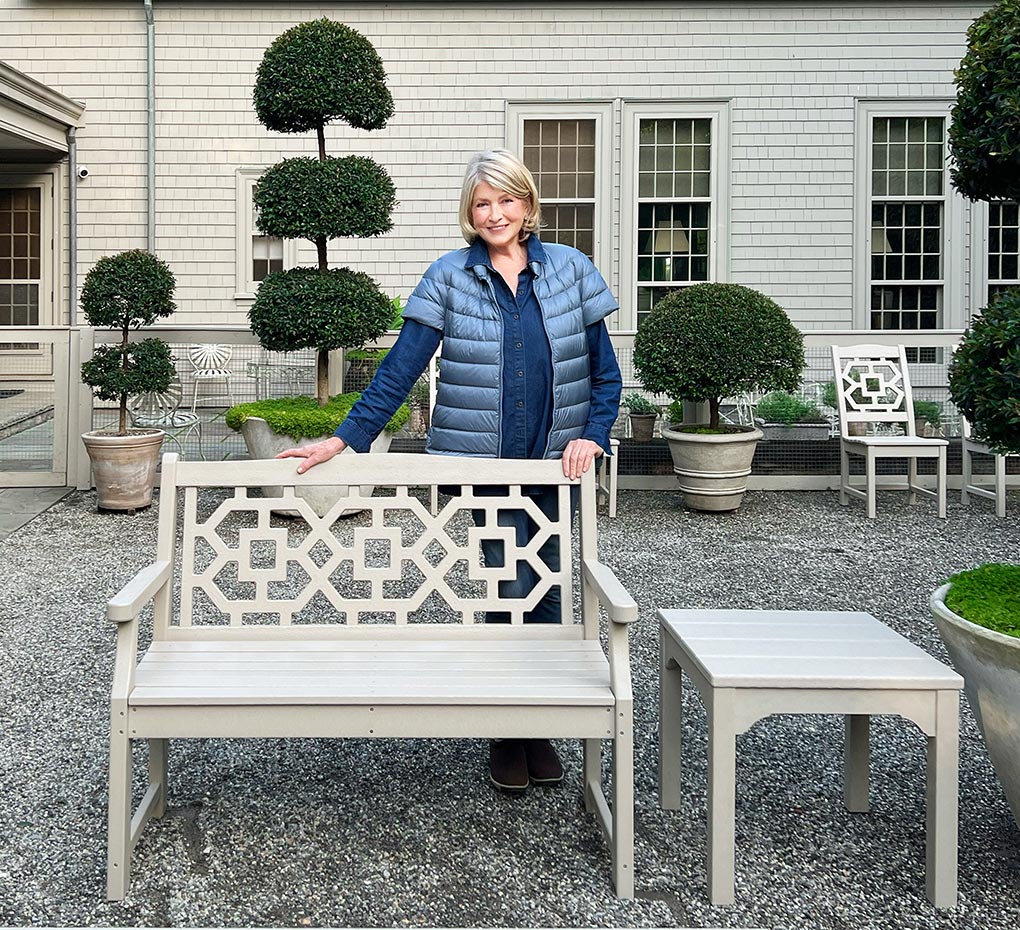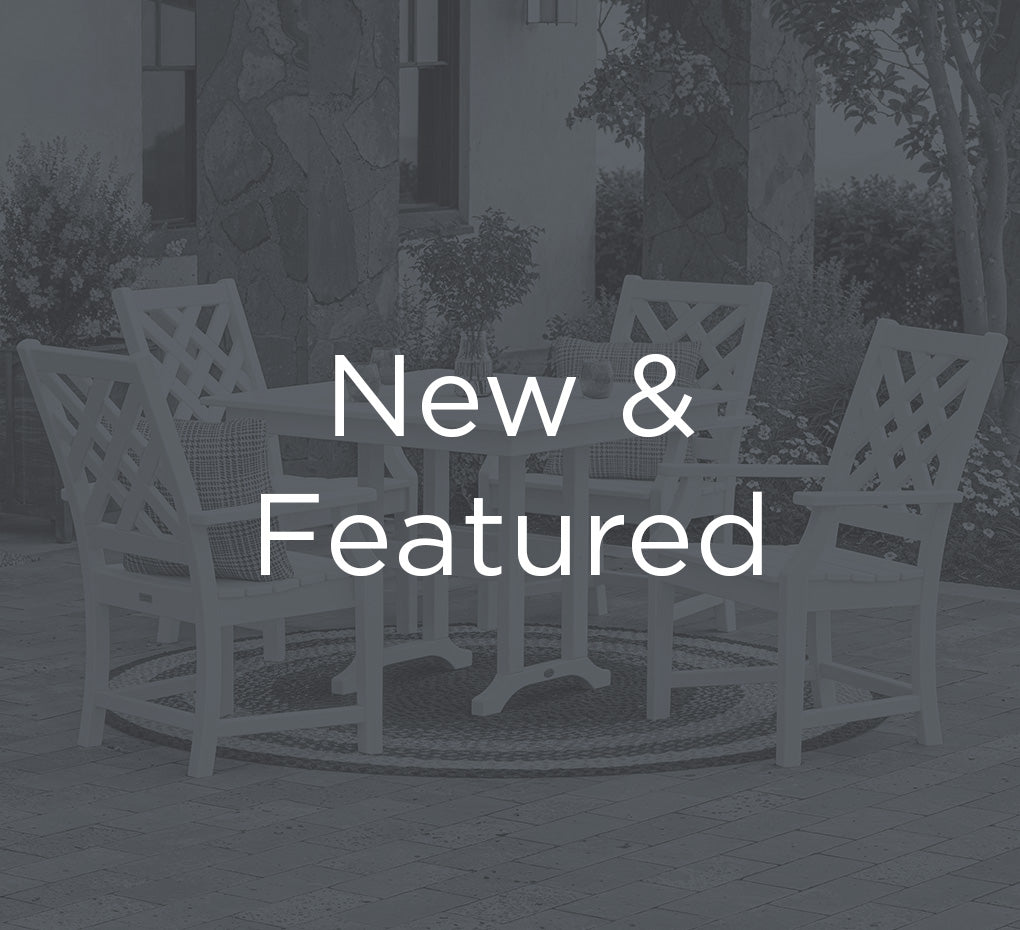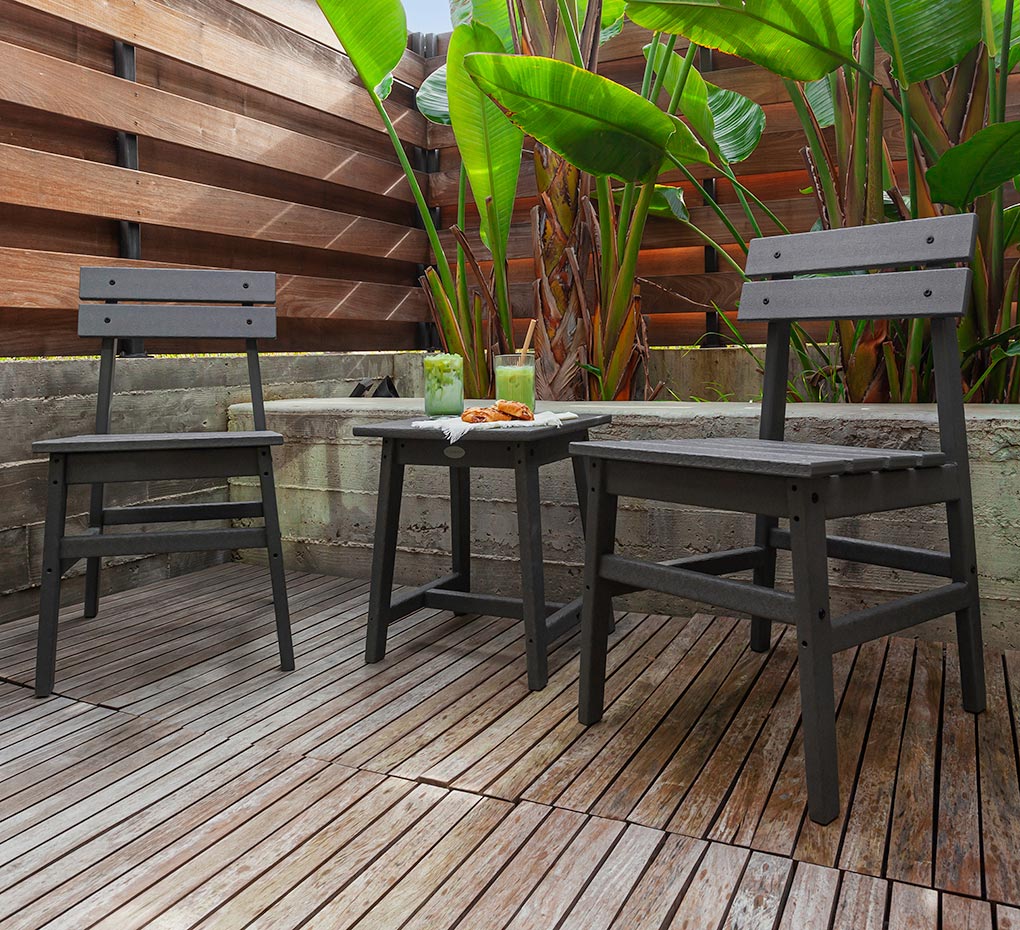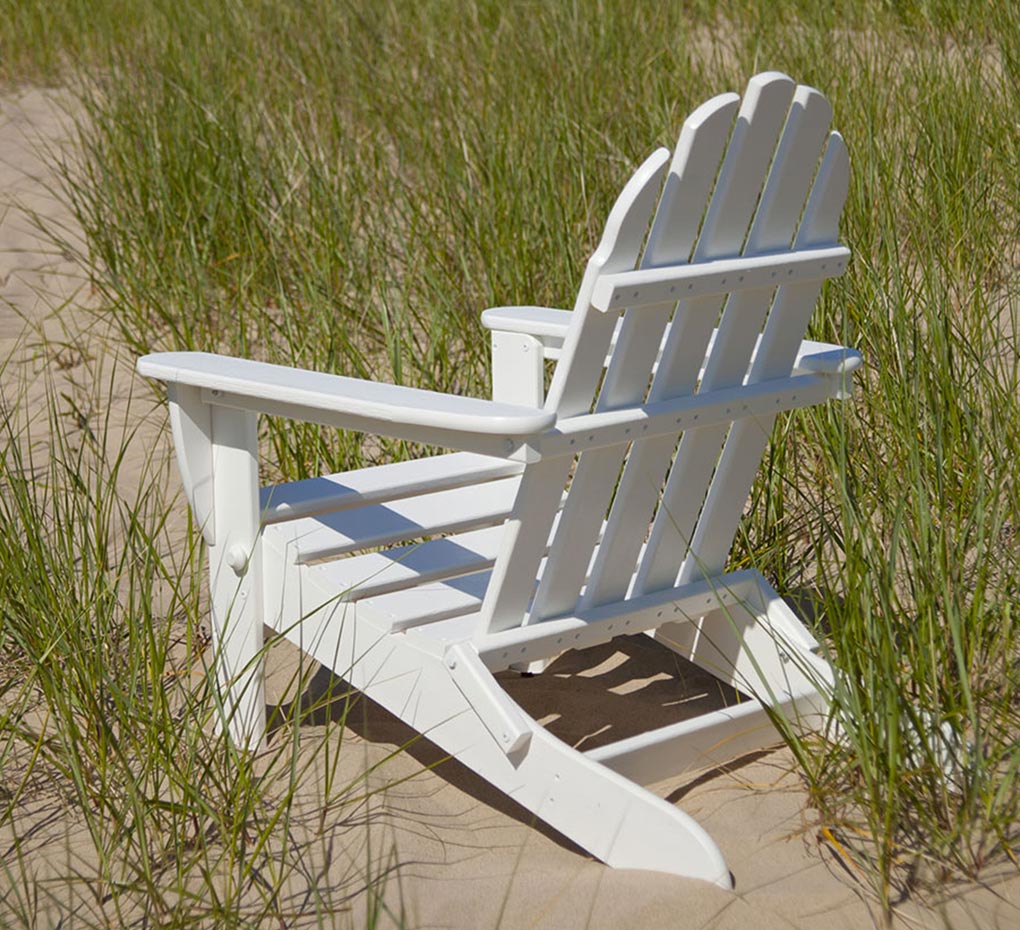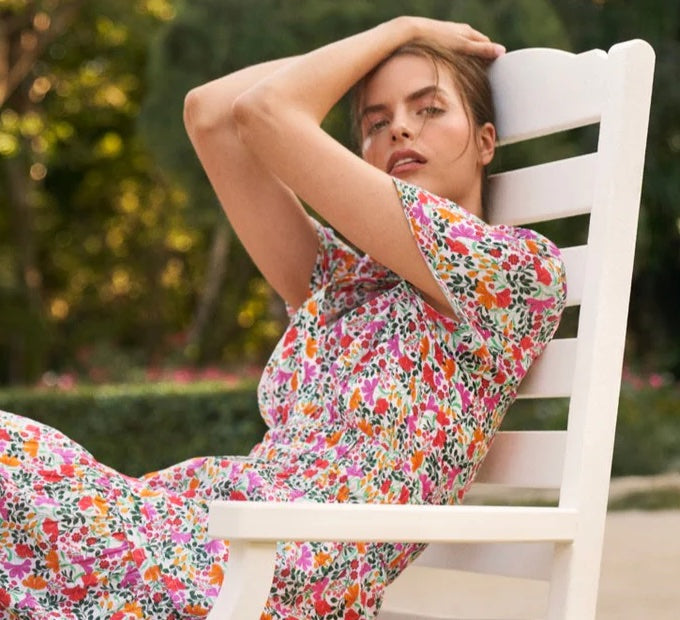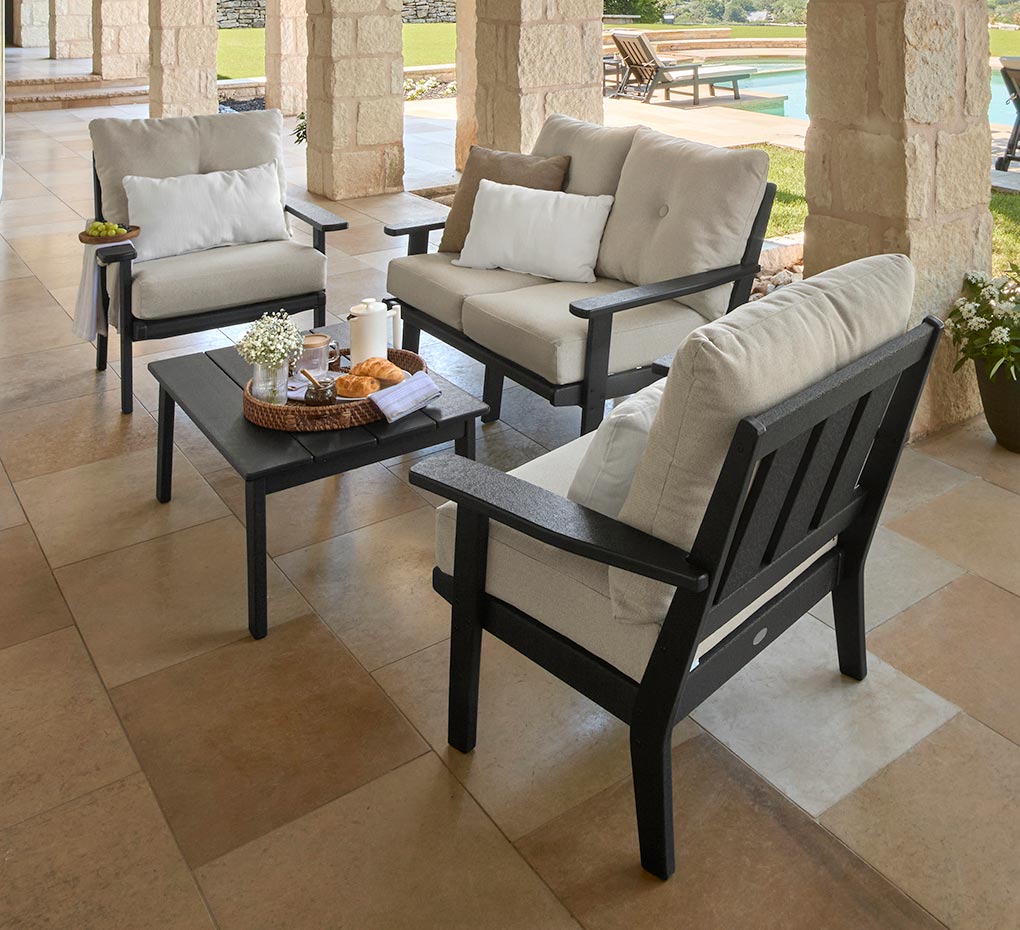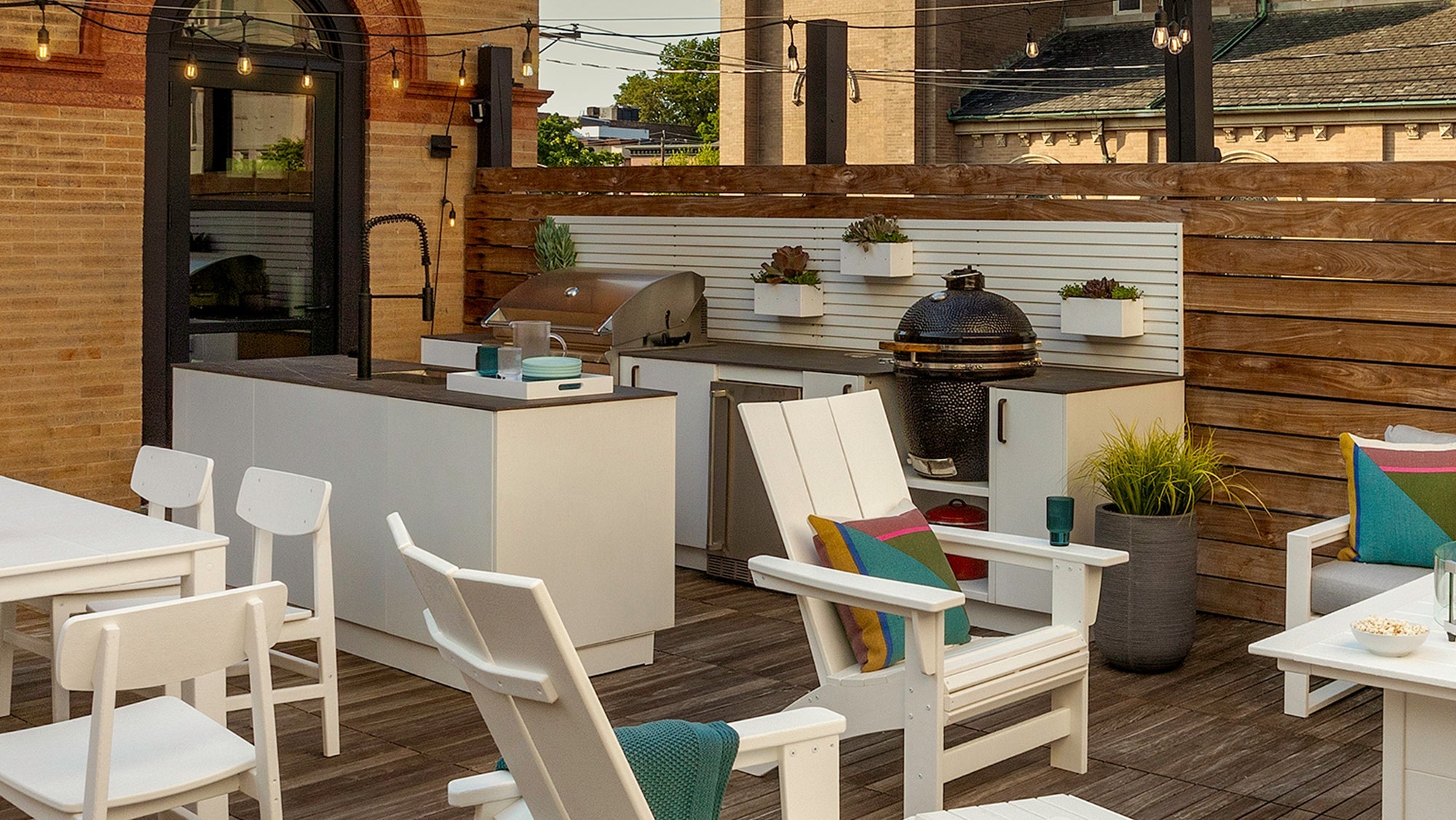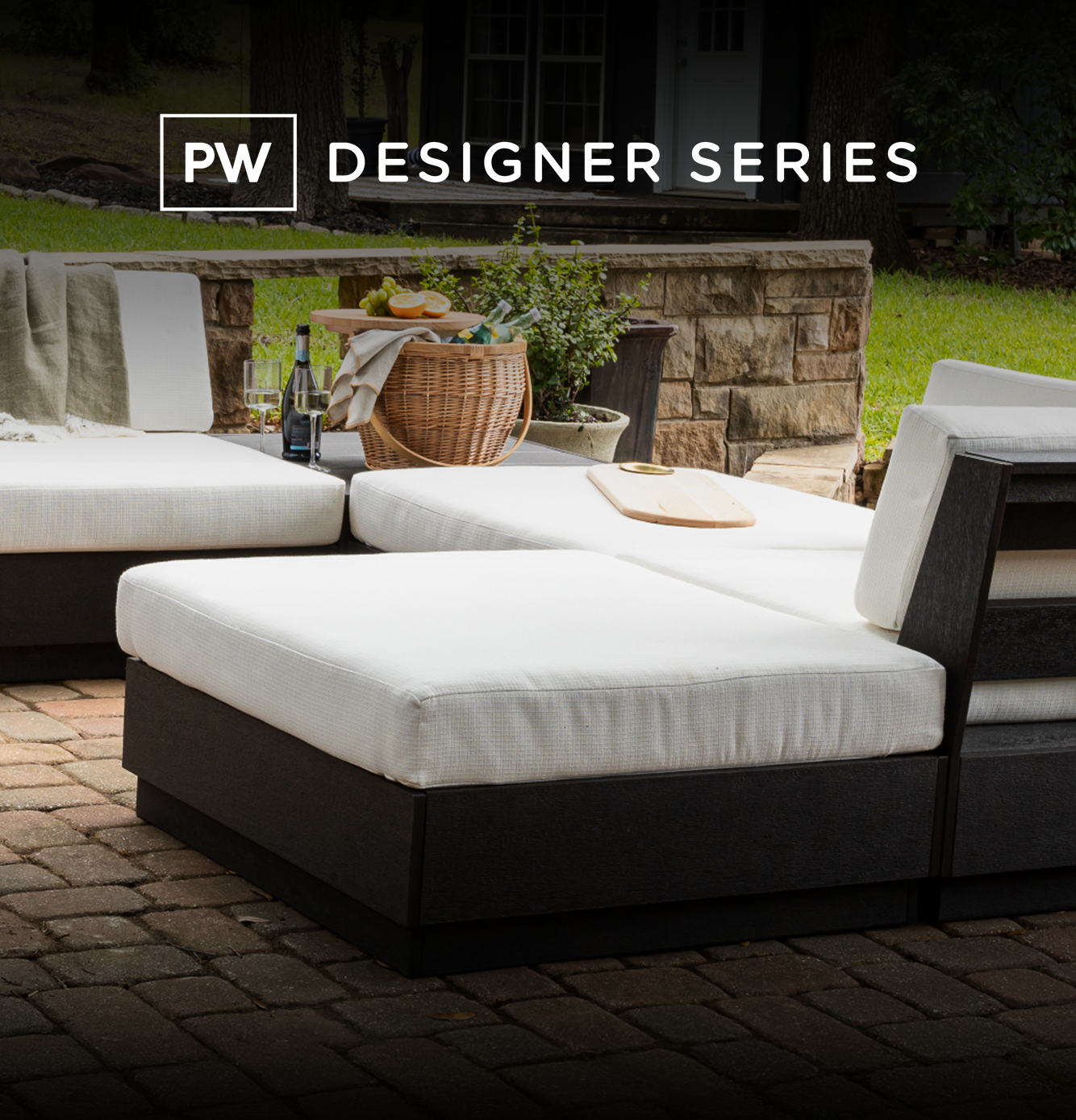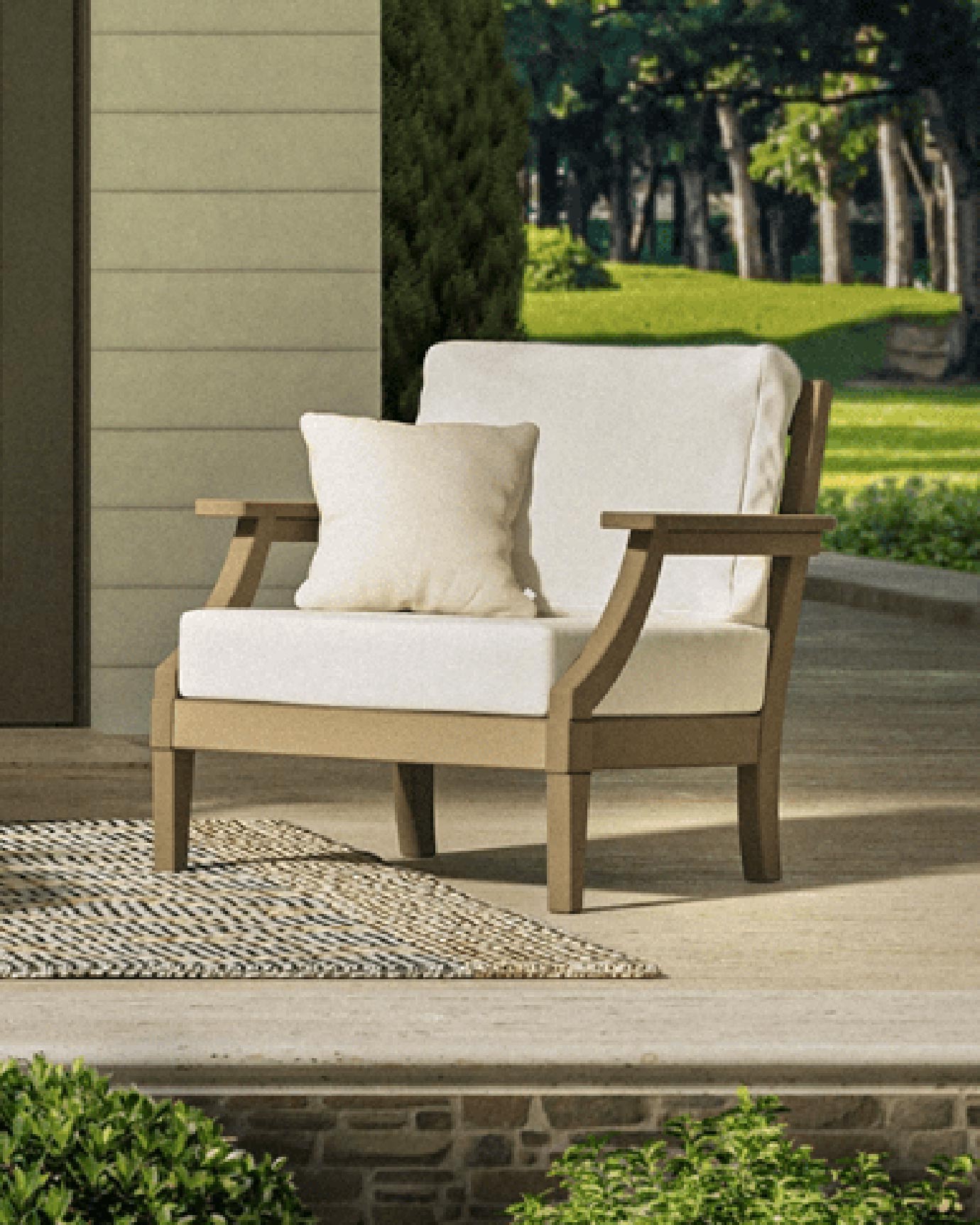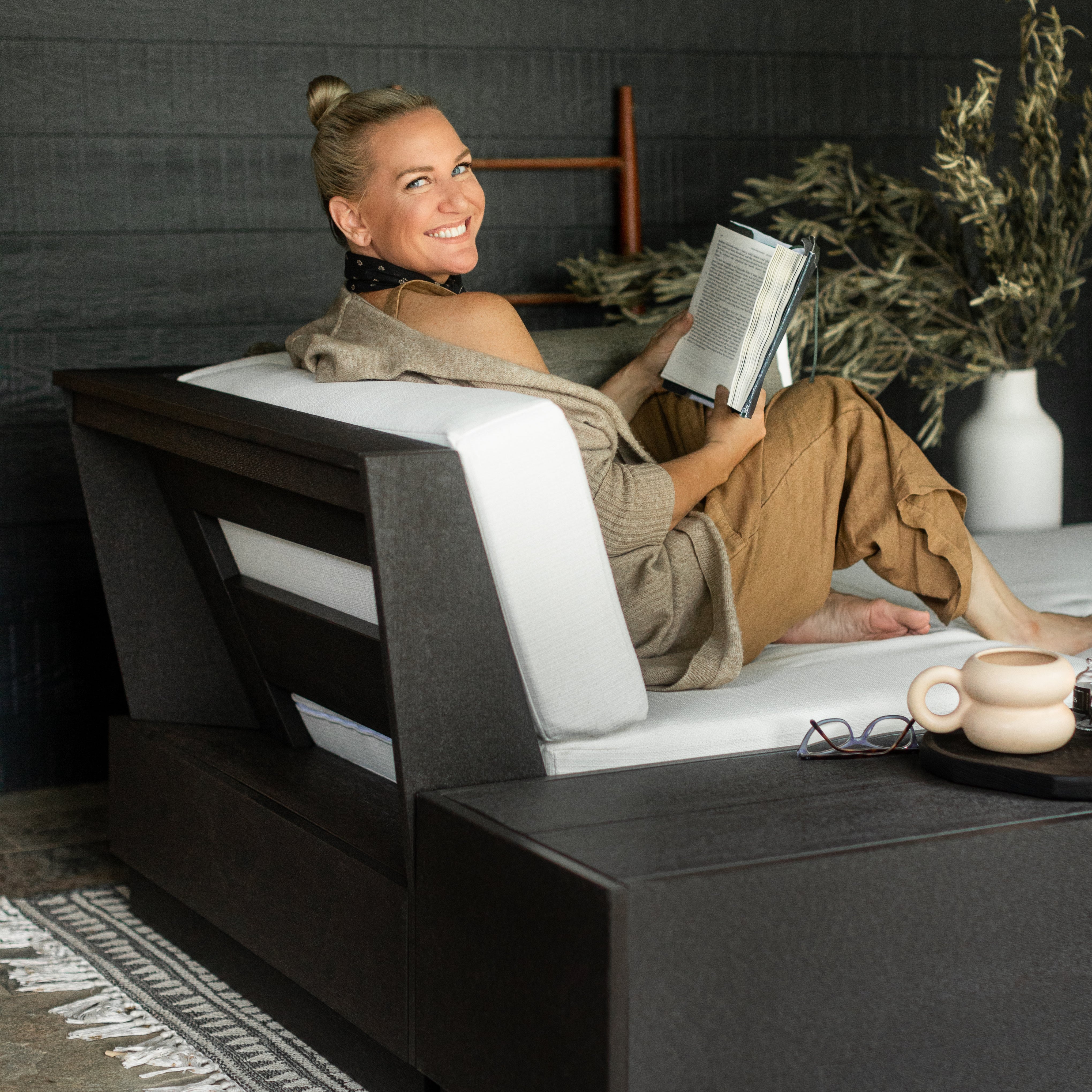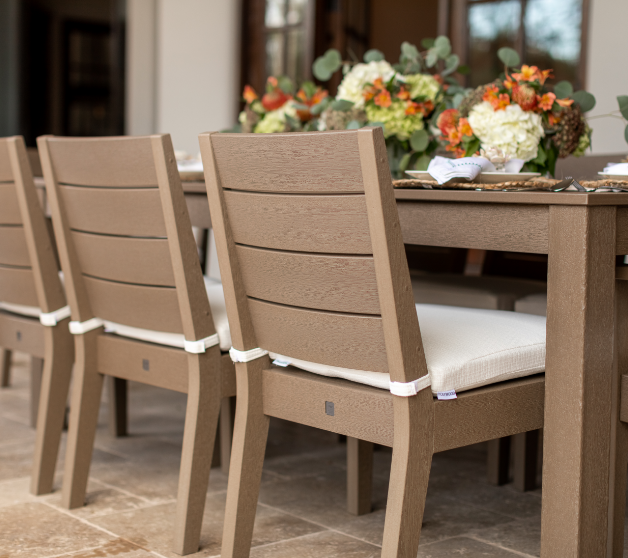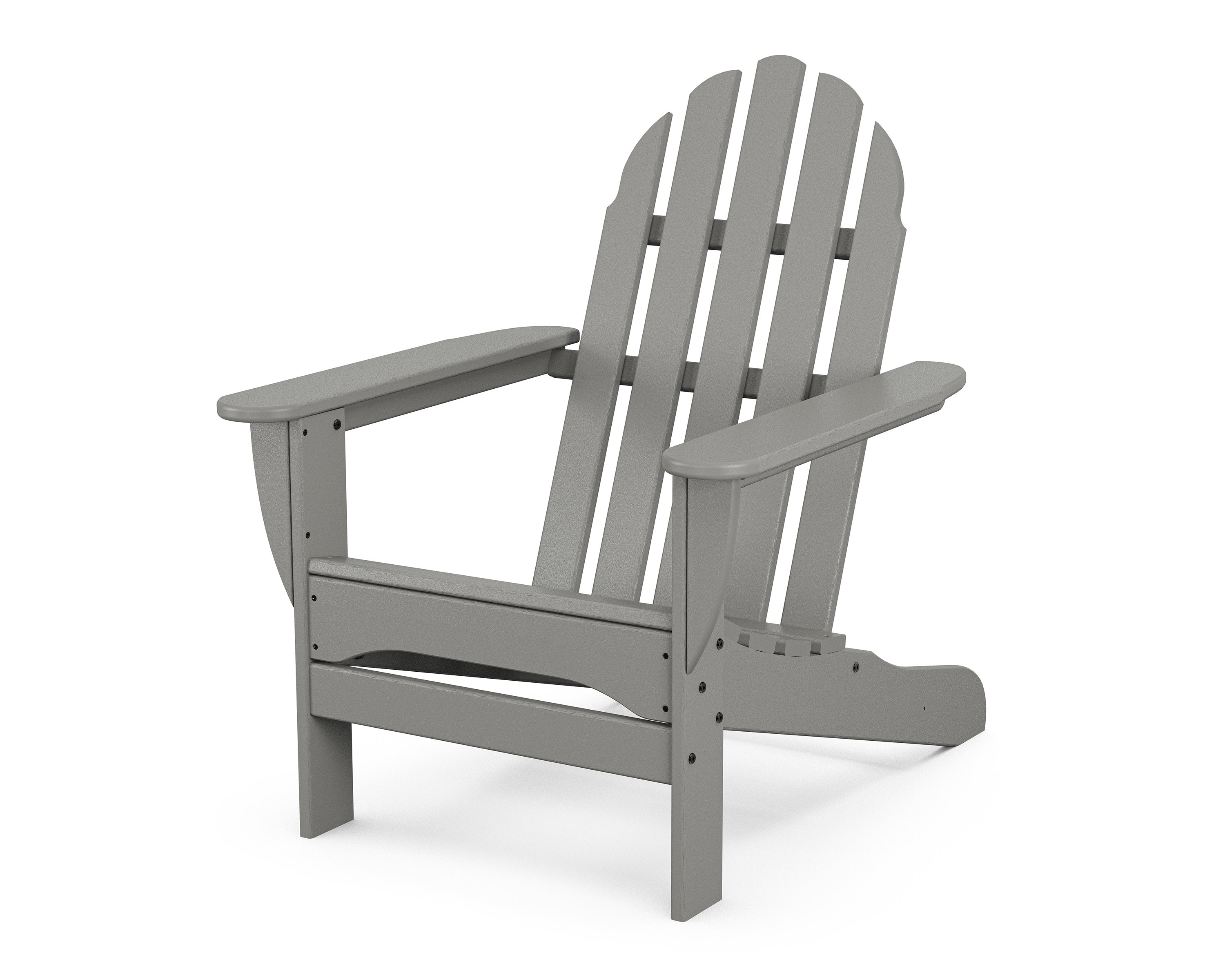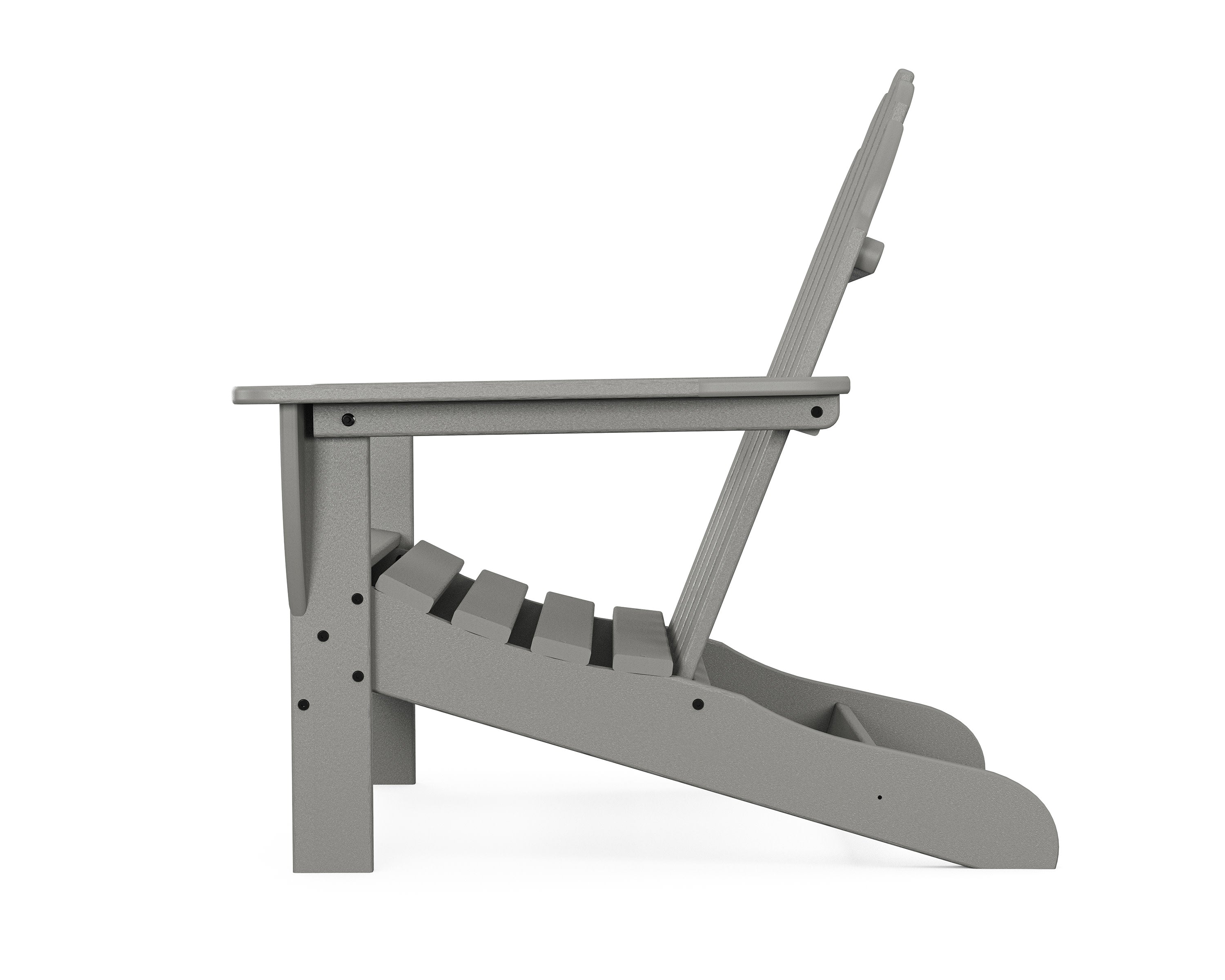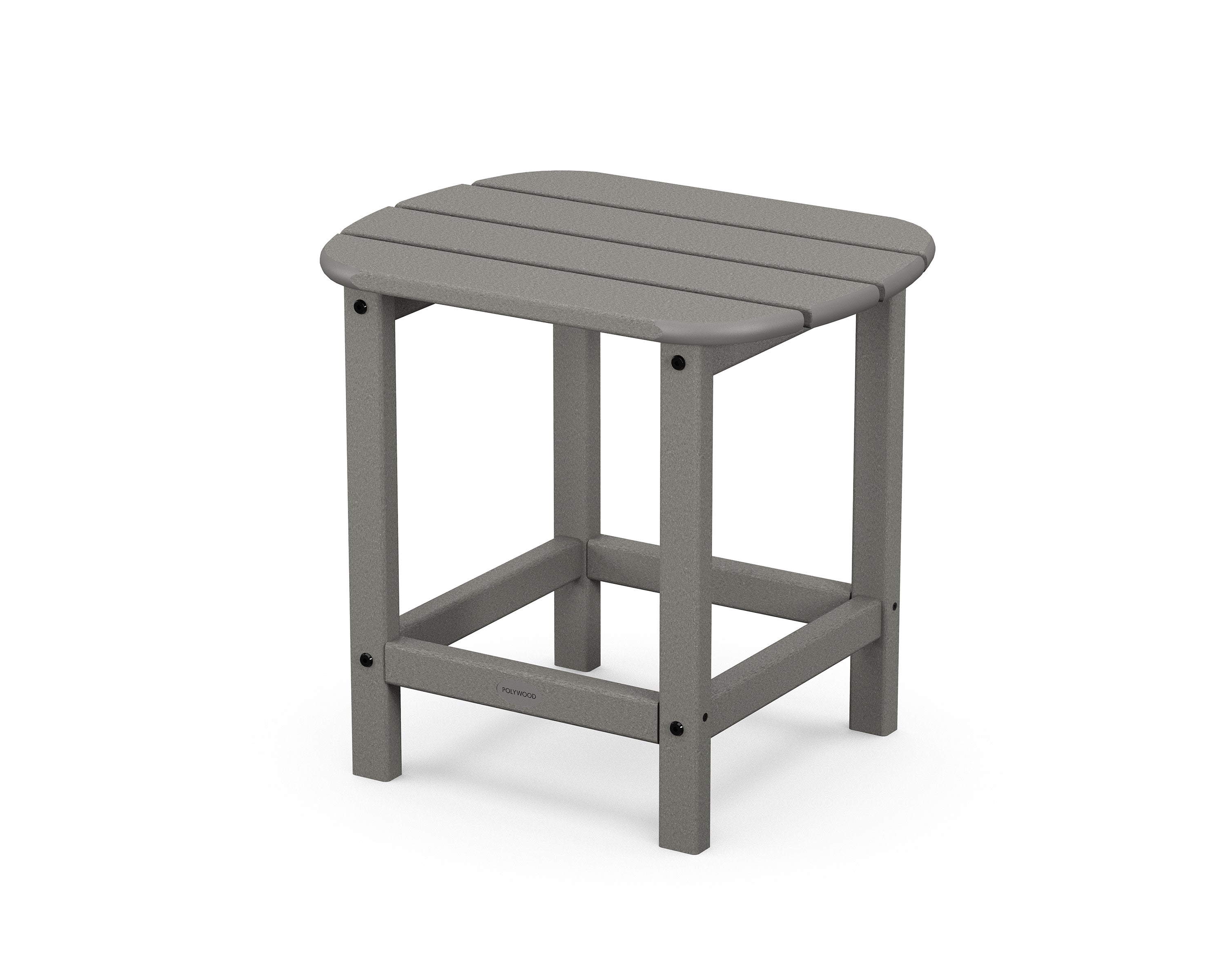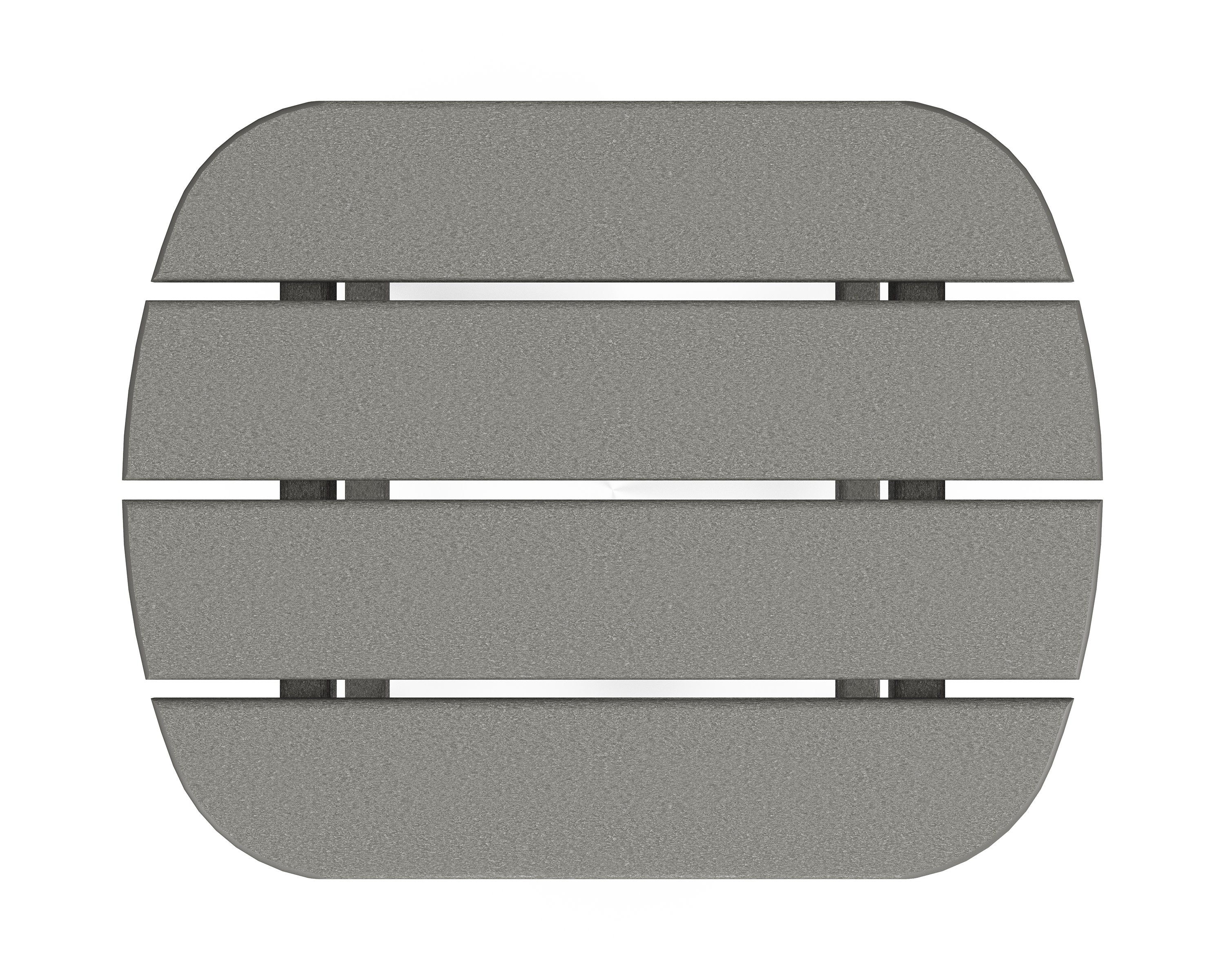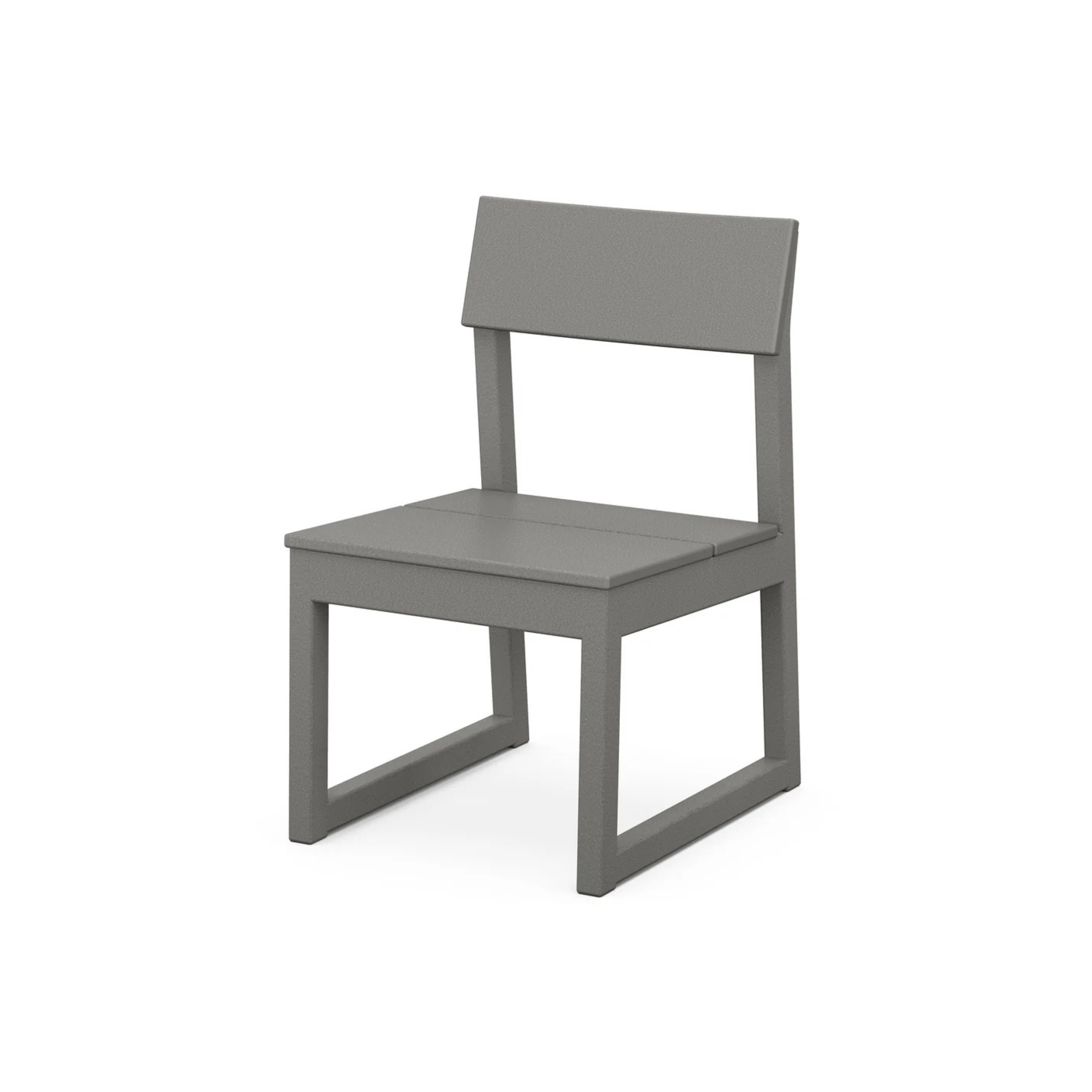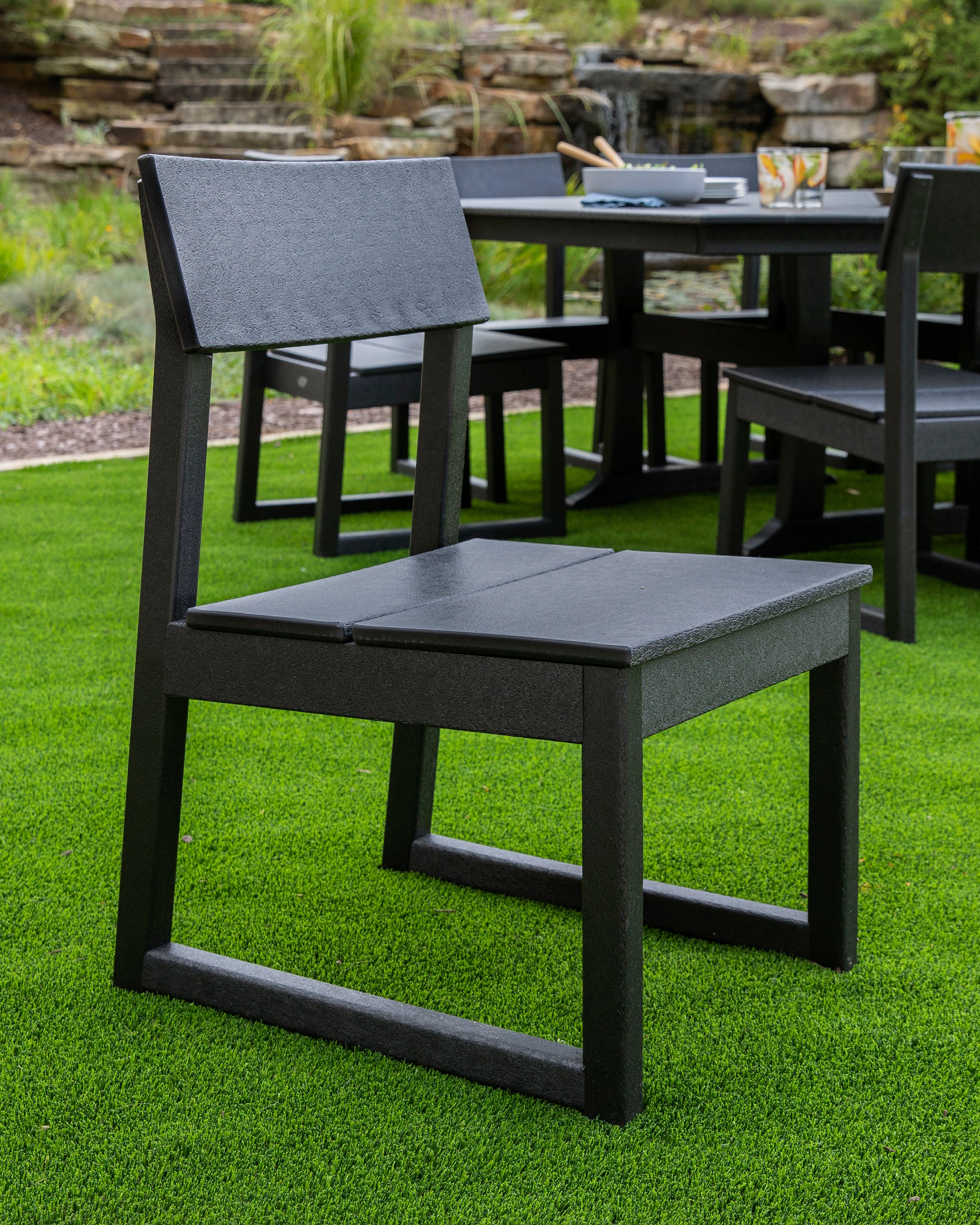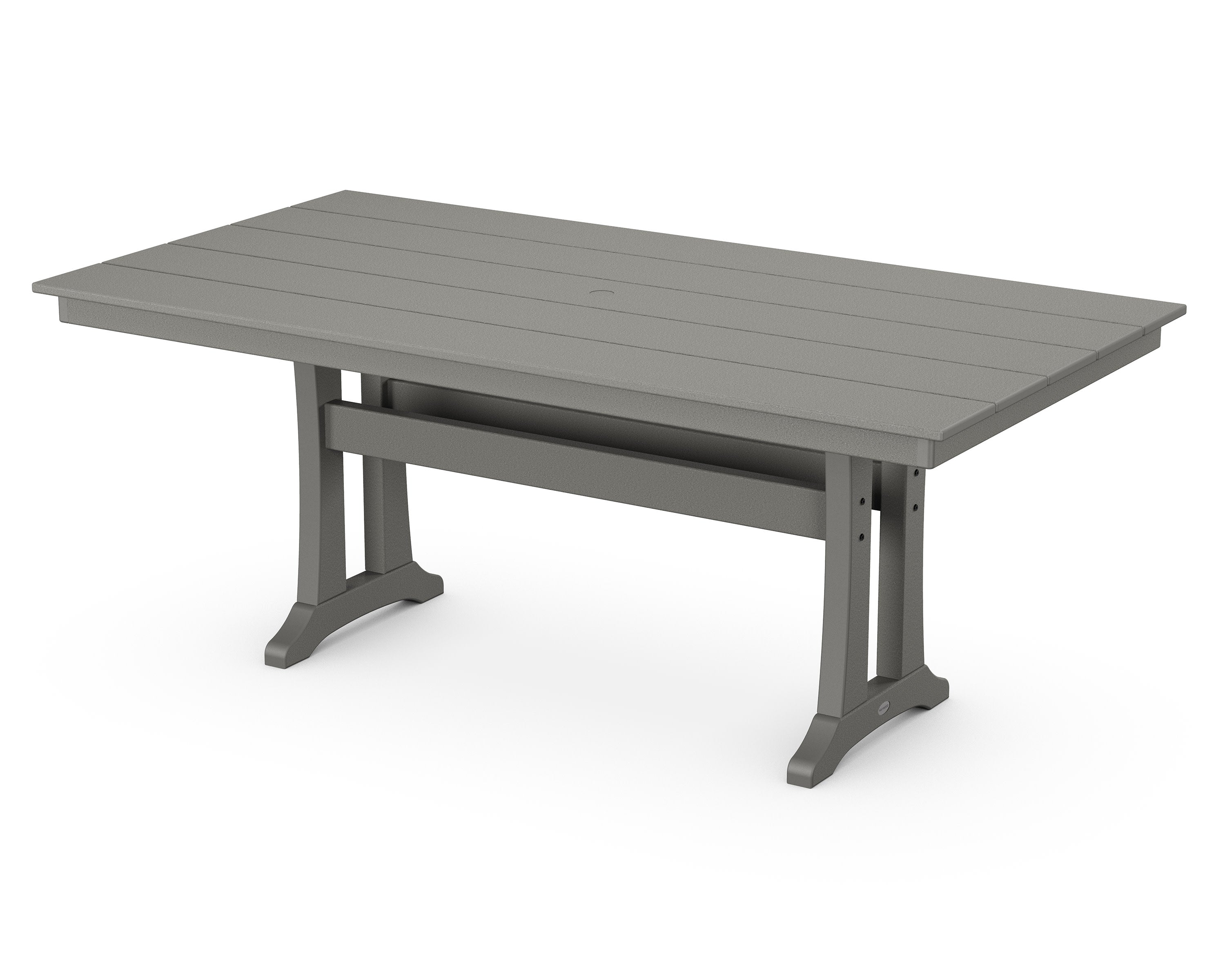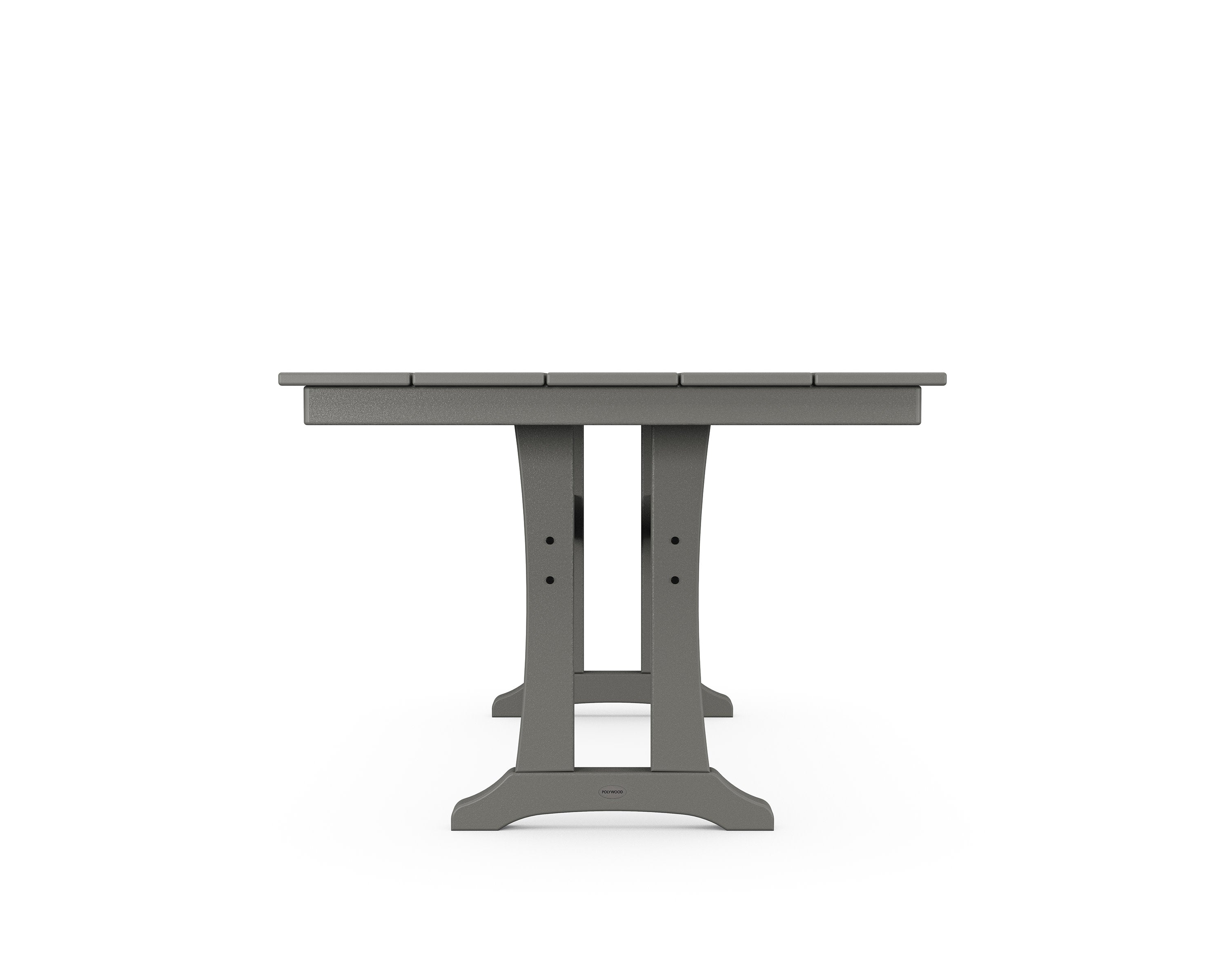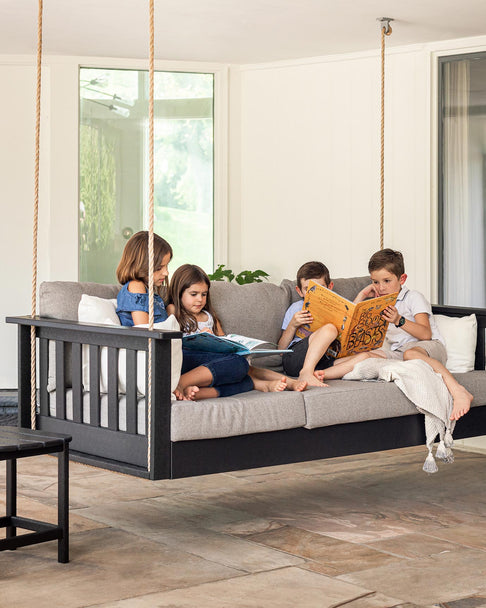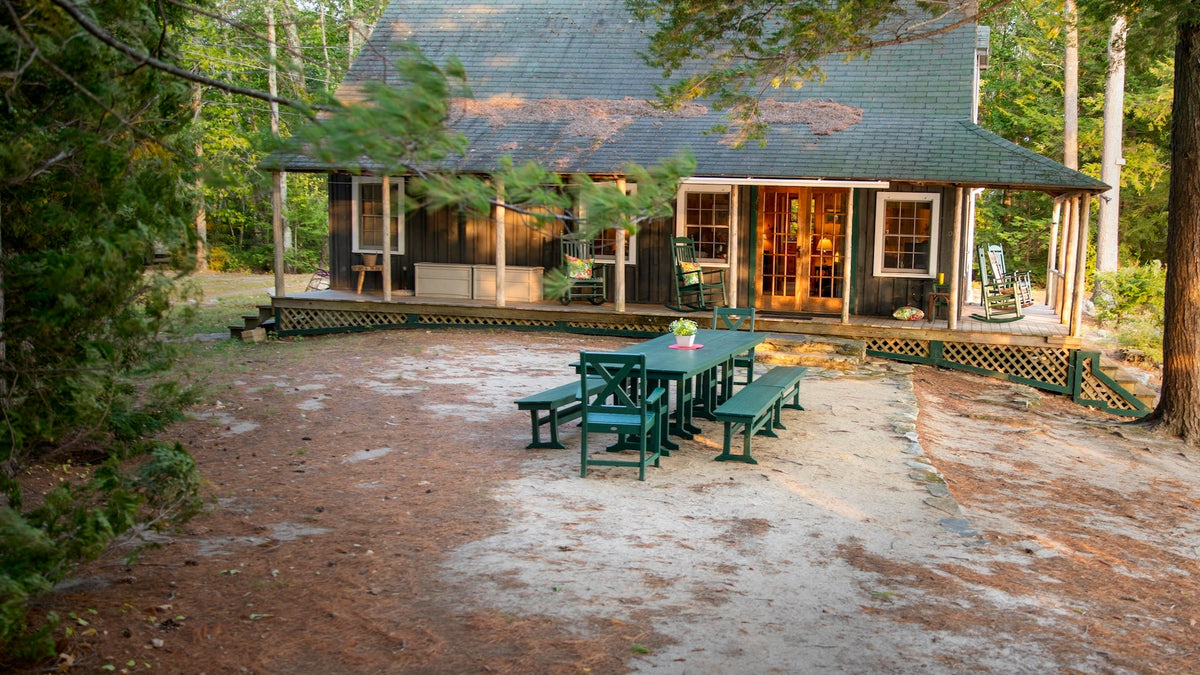

Does your cabin need new furniture, but you’re unsure which materials work best in wooded areas? You’ve come to the right place. We’ve done the legwork so you can shop with confidence and pick the perfect products for your secluded sanctuary.
We’ll discuss function—not form—because while tastes vary, some materials are simply better suited to rural life. Selecting well-built furniture made from high-quality materials will save you money, time, and stress in the long run.

How to Select Materials Based on Environmental Conditions
While conditions vary by location, many areas share challenges like wildlife, cooler and humid climates, wet weather, tree debris, pollen, and sap. Choose furniture materials that can endure these elements with minimal maintenance. Some materials will rise to the occasion, while others won’t.

Durability
Leaves, branches, and entire trees will fall during stormy weather. Since cabins are situated right in the thick of nature, the likelihood of sustaining damage from falling debris is high.
Wind Resistance
It can get breezy in the woods, and the winds increase at higher altitudes. While the trees surrounding your cabin act as natural barriers, gusts can still sneak through.
Heat/Cold Resistance
Forest environments are cooler because trees block sunlight from reaching areas below the canopies. Plus, trees sweat to stay cool through a process called transpiration. When the weather heats up, plants release excess water from their leaves, which evaporates into the air. This lowers the plants’ surface temperatures and that of the surrounding landscape.
In addition, air pressure decreases as altitude increases. The atmosphere is thinner in higher regions like mountains, and as the pressure reduces, so do the air temperatures.
Moisture Resistance
Weather conditions vary by location, but they all have one thing in common: water. Cabins in colder climates contend with blizzards and ice, while those in warmer locales experience rainy seasons yearly.

Stain, Corrosion, and Rust Resistance
Certain furniture materials are more susceptible to damage when exposed to plant byproducts like pollen, sap, and resin.
- Pollen: When dry, pollen is harmless to outdoor furniture. However, when it gets wet, a chemical reaction occurs that can cause stains and corrosion if not quickly removed.
- Sap and resin: These substances stick to anything—siding, cars, furniture, you name it—and are tough to remove. Left alone, they can lead to stains and discoloration. Plus, dirt, dust, and other debris will stick to sap and resin, creating a bigger mess.
Pest Resistance
Living in the forest means some of your closest neighbors are woodland creatures. While they’re often exciting to see, animals don’t understand property lines and will roam into your backyard in search of food, shelter, or nest fodder. This can lead to extensive and expensive repairs that your home insurance policy may not cover.
Damages caused by large animals like bears are usually covered, but many insurance companies view small animal damages as “preventable situations” and typically don’t offer reimbursement in these cases.
Which Outdoor Furniture Material Works for Cabins?
Explore the benefits and drawbacks of common outdoor furniture materials chosen for cabin homes.

High-Density Polyethylene (HDPE)
Since cabins are typically located in remote and wooded settings, homeowners turn to HDPE because it's durable and low-maintenance.
- Resistant to wind, weather, and fading
- Repels spills and stains
- Requires minimal cleaning and upkeep
- Can have a higher price point

Synthetic Wicker
Resin wicker is woven from man-made materials, resulting in furniture with all-weather performance and a rustic appeal.
- Resistant to moisture, humidity, stains, and insects
- Heavy enough to resist strong winds yet easy to move
- Cleaning the weave’s nooks and crannies is tedious
Hardwood
Teak, oak, and other hardwoods suit cabin aesthetics with their natural beauty and organic textures.
- Easy to clean
- Requires periodic refinishing to protect it against stains, moisture, and pests
- Weather- and wind-resistant
Injection-Molded Plastic
Injection-molded plastic is a lightweight, budget-friendly furniture option for cabin owners.
- Warps and cracks in extreme temperatures
- Water-, corrosion-, and rust-resistant
- Low-maintenance, but stains easily from pollen, sap, and animal droppings
- Susceptible to strong winds and fading
Aluminum
Homeowners often choose aluminum outdoor furniture for its lighter weight, which is practical for easy maneuverability in wooded or mountainous areas.
- Light and easy to maneuver, but cannot stand up to strong winds
- Naturally resistant to pests and rust, but needs treatment to resist corrosion and stains
- Requires little upkeep or cleaning
- Can overheat if left in the sun for prolonged periods
Wrought Iron
Wrought iron is a common furniture choice for cabins because of its rustic appearance.
- Needs regular maintenance to prevent rust
- Pest-, corrosion-, and wind-resistant
- Retains heat and cold, making it uncomfortable in hot and chilly climates
- Its heft makes moving difficult
Softwood
Log cabins are often built from softwoods like pine or cedar, and many homeowners pick outdoor furniture made from the same materials to create a cohesive look.
- Heavy enough to resist wind
- Dents and scratches easily
- Affordable and easily accessible
- Needs regular upkeep to resist moisture, humidity, stains, and pests
Natural Wicker
Natural wicker, made from bamboo, willow, reeds, and other organic fibers, can bring a warm, homespun feel to cabin settings. However, it's best to keep this delicate furniture indoors.
- Lightweight and susceptible to strong winds
- Does not get too hot or cold in extreme temperatures
- Needs constant upkeep to prevent breakage and dirt buildup
- Poor resistance to weather, fading, and stains

FAQs
What kind of patio furniture can stay out all year?
Outdoor patio furniture made from durable materials like HDPE plastic, teak wood, and powder-coated aluminum can stay outside all year long. These materials can handle inclement weather and harsh climates and don’t require a lot of upkeep to maintain their good looks. That being said, covering furniture when you aren’t using it is always a good idea. This prolongs its life and makes future cleanups quick and easy.
What is the best outdoor furniture for rainy weather?
Outdoor furniture made from non-porous materials works best in rainy weather. Since HDPE and other plastic materials can’t absorb moisture, they’re impervious to rust, corrosion, and water-induced warping.

What kind of furniture is best for a screened-in porch?
Screened-in porches offer more protection than other outdoor living spaces, so you can be more lenient in your furniture choices. However, you still have to deal with outdoor temperatures, and UV rays, wind, and humidity can sneak through screens. Knowing this, look for furniture pieces made from durable materials like HDPE or synthetic wicker. Choose rocking chairs and Adirondacks in these materials to get the classic look you love without the upkeep.
What fabric holds up the best outdoors?
The best outdoor fabric options are made from synthetic materials that can withstand the elements, such as solution-dyed acrylic and polyester. These fabrics are resistant to fading, mildew, and UV damage. They're also water-resistant and easy to clean, making them a good choice for outdoor furniture and cushions.


